SELECTED TREASURES FROM THE COLLECTION OF THE SCCCI CHINESE BUSINESS CULTURE HUB








SELECTED TREASURES FROM THE COLLECTION OF THE SCCCI CHINESE BUSINESS CULTURE HUB







新 加坡中华总商会自1906年创办以来,迄今迈 向第116个年头。为了更好地回顾历史,传
承与弘扬华商精神,我们于2017年设立历史小组,以
开展总商会百年华商精神与文化研究工作。两年后,
第60届董事会在哈莉玛总统见证下,我们更设置
新加坡中华总商会华商文化基金,其中一个目标就是
推动新加坡中华总商会华商文化馆的成立。
导华商精神与文化的重要性,同时也肩负起国
民教育推广的使命,不懈于加强年轻世代对国 家的认同感。
总商会华商文化馆引领我们打开历史的
大门。在这里,我们用文字记录前人与先
贤的故事,用文物呈现华商精神的内涵。日
后,我们将透过“研究出版—典藏展览—文化
配合总商会华商文化馆的成立,我们出 版了《臻品典藏》精装展览图册。这本图册集 结了总商会百年典藏,通过展览文字与展品图 像,让我们一起回顾过去、省思当下,迈步 未来。
近两年来,我们在疫情之中推进总商会华商文化
馆的策展工作,风雨无阻。随着总商会华商文化馆正
式开幕,也标志总商会迈入新的里程。今后,我们将
秉持诚信﹑效忠﹑回馈与创新精神,致力于向国人倡
活动” ,经营一个具有开放性与包容性的文化平

台。总商会的华商精神把总商会和国家发展连
接起来,我们会继续为华商、华社和国家作出
贡献。
黄山忠 会长 新加坡中华总商会
Sinceits establishment in 1906, the Singapore Chinese Chamber of Commerce & Industry has moved into its 116 th year. We set up a History Taskforce in 2017 to reflect on our history and promote the Chamber Chinese Entrepreneurial Spirit. We have researched on the Chamber’s centennial Chinese Entrepreneurial Spirit and Culture. Two years later, the Chamber's 60 th Council was sworn in, in the presence of President Halimah Yacob, and it announced the establishment of
the SCCCI Chinese Entrepreneurial Culture Foundation. One of the aims of the Foundation is to establish the SCCCI Chinese Business Culture Hub (SCBCH).

In the past two years, we have pushed forward, without fail, the SCBCH amidst the COVID-19 pandemic. The official opening of the SCBCH also marks a new milestone that the Chamber has achieved. In the future, we will uphold the
spirit of Integrity, Loyalty, Giving back to society and Innovation, and commit to promoting the importance of the Chinese Entrepreneurial Spirit and Culture. At the same time, the Chamber also shoulders the responsibility of national education and strengthens the sense of belonging.
The SCBCH allows us to open the door of history. We have used the gallery texts – to record the story of our pioneers – and artefacts
to encapsulate the Chinese Entrepreneurial Culture. We will be creating an open and inclusive cultural platform through research and publication, treasures of the Chamber collection and exhibition, as well as cultural programmes in the future. The Chinese Entrepreneurial Culture connects the Chamber and development of the nation, and we strive to continue contributing to Chinese entrepreneurs, Chinese community and the country.
In conjunction with the opening of the SCBCH, we have published Selected Treasures, which is made up of the century-old treasures of the Chamber. This allows us to review the past, reflect on the present and march towards the future, through the exhibition texts and artefacts of the Chamber.

 Roland Ng San Tiong President Singapore Chinese Chamber of Commerce & Industry
Roland Ng San Tiong President Singapore Chinese Chamber of Commerce & Industry




回 顾人类的文明史,商业活动一直是世界 文明的推动力。商业带动人口、货物与
资金的流动,同时也促进不同地区的文化交流。
新加坡因地理位置的关系,一直扮演着海上贸易
活动中转站的角色,特别在1819年英国人到来以
后,新加坡很快便成为大英帝国在远东最重要的
商港。新加坡实施自由贸易政策,吸引不同地区
的移民﹑商人和劳工前来,迅速形成一个多元与 开放的移民社会。
海、克服万难建立起来的华人移民社会。
他们到此谋生和发展,经由资本的累积而
奠定基础。一些经济实力雄厚的商家逐渐在
社会上发挥影响力,并进一步参与公共事
务。1906年成立的“新加坡中华商务总会”
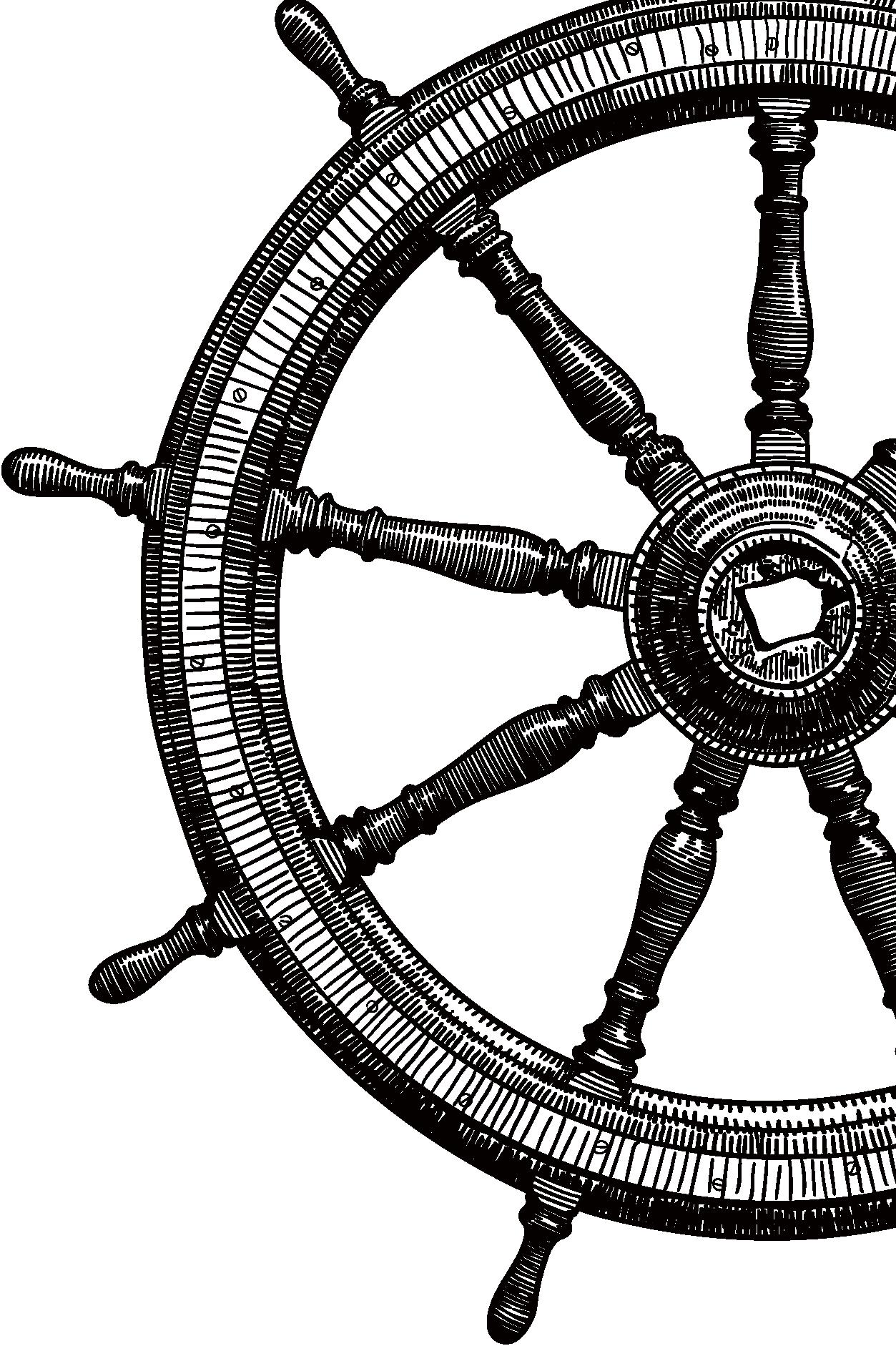
(1917年更名为新加坡中华总商会,下文统
一简称为总商会),正是在这种背景下诞生。
总商会是新加坡华商最高的领导机构,其宗旨在维
护商家和华社的利益,积极推动工商业发展和经济 繁荣,支持文化教育事业,致力于为社会服务。
一个多世纪以来,总商会见证了新加坡经历英
国殖民、日本占领、争取自治、新马合并到建国过
程等历史发展阶段,并在各个阶段发挥它的功能,
扮演重要角色。正是这些与新加坡共同走过的历史
轨迹,最能彰显出总商会的华商精神与时代意义。
早年新加坡依靠一代又一代先贤飘洋过
中华总商会的历史反映着新加坡的历史”。

这是新加坡政府对总商会的历史及其贡献,
给予最高度的肯定。
商社群的崛起;其次,我们介绍总商会成立
的时代背景与社会意义;第三,我们来到禧街
47号,阐述总商会会所的故事;第四,我们透
过总商会华商文化馆的精选典藏,带出总商会
的华商精神—诚信﹑效忠﹑回馈和创新精神;
控股﹑新加坡国立大学﹑中国第一历史档案
馆﹑台北中央研究院近代史研究所档案馆﹑
泰国国家档案馆﹑英国国家档案馆﹑ 埃斯特
森大学图书馆、荷兰国家档案馆、莱顿大学
总商会华商文化馆紧扣“华商精神
生生不息”主题,讲述总商会的历史及华商精
神的故事。这本图录按时间轴分四大部分:
首先,我们带领读者回到海洋贸易史的脉络,
说明新加坡蓬勃的商贸活动促成移民社会与华
最后则是结语。
等国内外机构和文物捐赠者对总商会华商文 化馆的支持,让这本书得以顺利出版。
我们要特别感谢新加坡国家文物局的支
持,同时也感谢新加坡国家档案馆﹑新加坡
国家图书馆﹑新加坡国家博物馆﹑新加坡报业
Looking back on the progress of human civilisation, commerce has always been an important force in propelling culture forward. Commerce attracts people, generates the flow of goods and capital and promotes cultural exchange. Due to its strategic geographical location, Singapore has always played a role as a transhipment centre in maritime activities. This was especially so after the arrival of the British in 1819 when it quickly transformed into the
most important trading post of the British Empire in the Far East. Singapore implemented a free trade policy, attracting thousands of immigrants, merchants and coolies from different regions. This also led to the emergence of an open and multicultural immigrant society.
The early Chinese migrant community of Singapore was formed by generations of migrants who set sail here, conquered countless difficulties and survived. These migrants
overcame barriers, gradually accumulated wealth and settled in the island. The Chinese merchants among them, having more financial resources, gradually played a more active role in the community. The Singapore Chinese Chamber of Commerce (now known as the Singapore Chinese Chamber of Commerce & Industry, hereinafter referred to as “the Chamber”) was established in 1906 under such circumstances. The Chamber is the apex organisation of Chinese business

community in Singapore. Its purpose is to protect the interests of Chinese merchants and Chinese community, actively promote the development of commerce and industry and support cultural and educational activities as well as community services in Singapore. Over the past century, the Chamber had witnessed Singapore under British colonial rule, the Japanese Occupation, the fight for self-governance, the merger and separation of Singapore and Malaysia,
the independence of Singapore and other historical developments. Throughout this period, the Chamber played its role fully and exerted influence in every phase. It was precisely this historical trajectory that best signifies the Chamber Chinese Entrepreneurial Spirit and its significance for the times.

This is the highest accolade given by the Singapore government to the contributions of the Chamber.
Through the theme “The Unwavering Force of the Chinese Entrepreneurial Spirit”, the SCCCI Chinese Business Culture Hub
Singapore’s founding Prime Minister, Lee
Kuan Yew once said, “The history of the Singapore Chinese Chamber of Commerce is a reflection of the history of Singapore.”
(SCBCH) exhibits the Chamber’s history and the story of the Chamber Chinese Entrepreneurial Spirit. Firstly, we retrace the history of the maritime trade, explaining how Singapore’s thriving commerce fostered the rise of an immigrant society and Chinese business community. Secondly, we will introduce the historical backdrop and social significance to the establishment of the Chamber. Thirdly, we will delve into the story behind the setting up of its premises at 47 Hill Street. In the fourth
section, we will use the masterpieces of our collection to showcase the Chamber Chinese Entrepreneurial Spirit – Integrity, Loyalty, Giving back to society and Innovation. Last section is the concluding remark.

We would like to give special thanks to the National Heritage Board for their support. We would also like to express our appreciation to the following institutions: National Archives of Singapore, National Library Board
Singapore, National Museum of Singapore, Singapore Press Holdings Media Limited, National University of Singapore, First Historical Archives of China, Institute of Modern History Archives, Academia Sinica (Taipei), National Archives of Thailand, The National Archives (United Kingdom), Biblioteca Estense
Universitaria, Nationaal Archief (Netherlands), Leiden University, as well as the donors for supporting the SCBCH, to make this publication possible.
Singapore as an Entrepôt and the Emergence of a Chinese Business Community
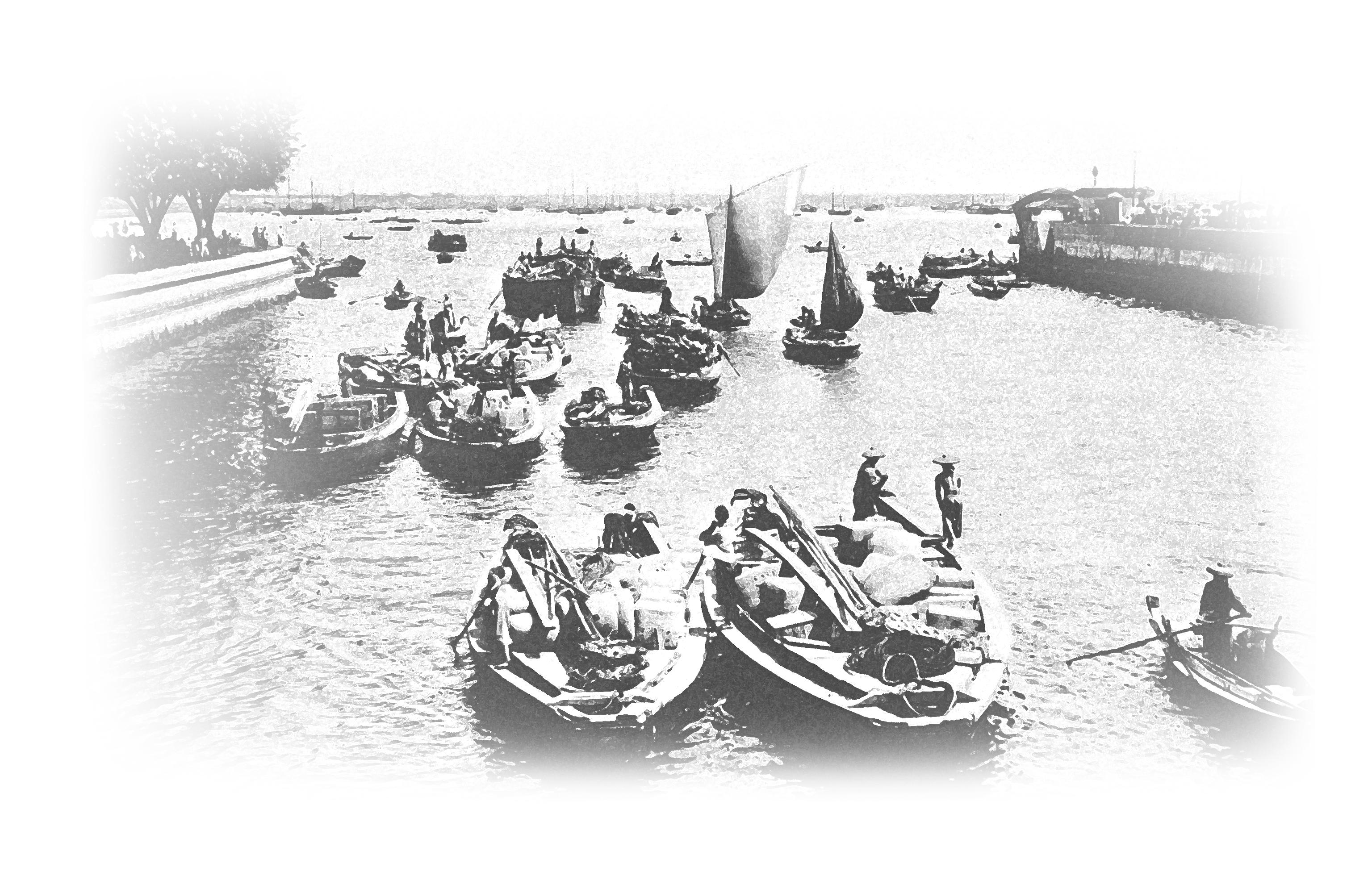
已成为东南亚海上交通要道和贸易中
心之一。在中国文献里,宋代《诸蕃志》 ( 1225
年 ) 的“凌牙门”﹑元代《岛夷志略》 ( 1349年 )
的“龙牙门”﹑明代《武备志》(1621年) “长腰屿”

等,多指向当今的新加坡。马来文献《马来纪
年》( 1612年 ) 提及“淡马锡” ( Temasek ) 和“新加
坡拉王国” (Singapura),以及马来语海峡 (Selat)
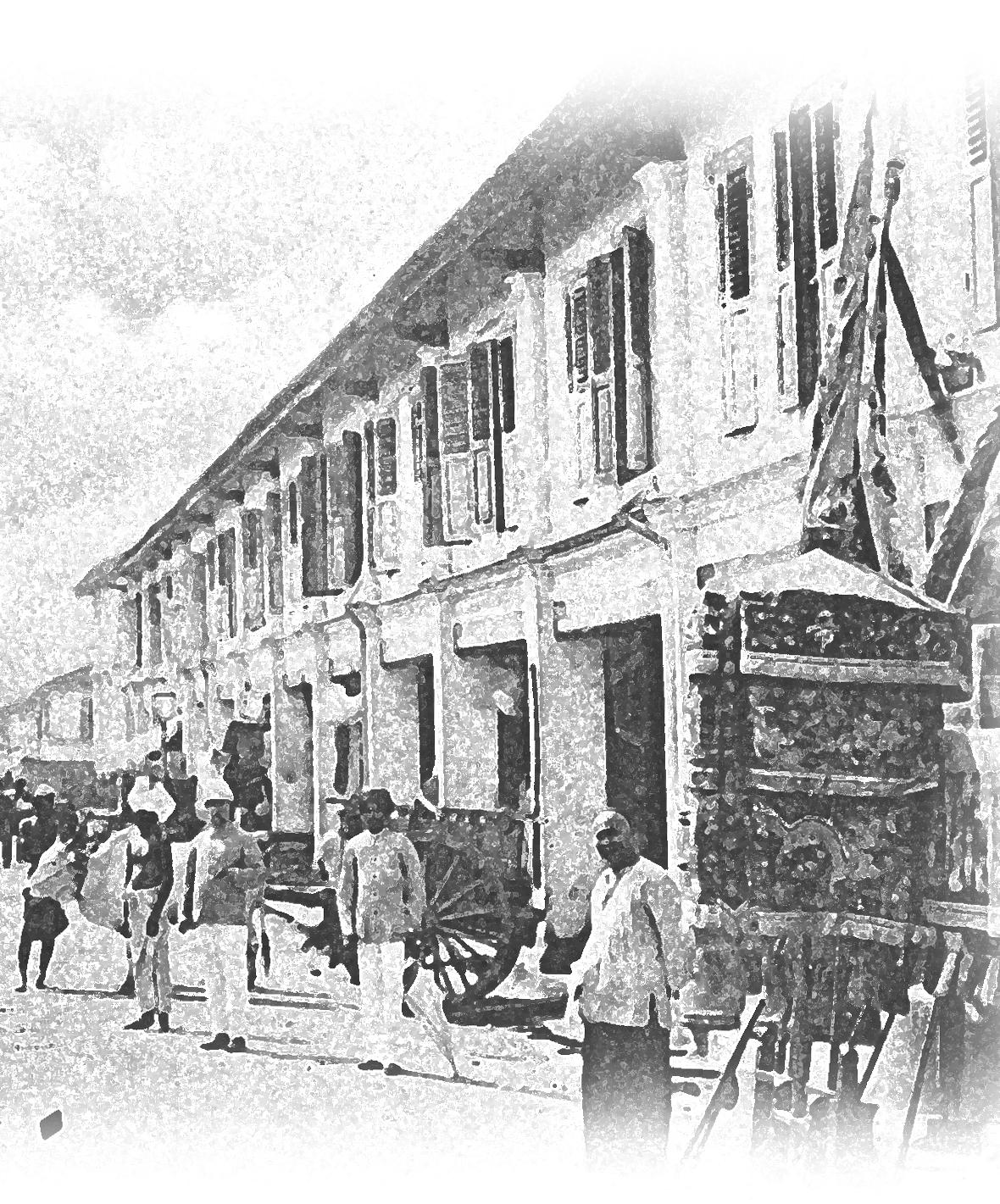
之音译“石叻”,也多指涉今日之新加坡。自16世
纪以来,西方包括葡萄牙﹑荷兰﹑英国等航海
图也都标记了新加坡的位置。本地考古出土的
文物也发现14世纪的陶瓷片﹑日用品和钱币,证
实新加坡是区域间重要的贸易站,在海上贸易 史上占一席之地。
1819年英国人史丹福•莱佛士爵士登陆后,新
加坡很快变成英国的殖民地。在威廉•法夸尔的
治理下,新加坡被发展成为全球贸易体系最重要
As Singapore lies at the confluence of the seasonal monsoons, it had become the crossroads of one of the important sea trade routes in Southeast Asia and trading hubs since the 13 th century. Singapore was referred to by various names in Chinese historical texts, including Song Dynasty’s Zhu Fan Zhi
(1225), which mentioned “Ling Ya Men”, Yuan
Dynasty’s Dao Yi Zhi Lüe (1349) made reference to “Long Ya Men” and Ming Dynasty’s Wu
Bei Zhi (1621) referred to “Chang Yao Yu ”.
The Sejarah Melayu (The Malay Annals) (1612) cited “Temasek ” and “Singapura ” while the Malay word for Strait “ Selat ” was also used to refer to Singapore. Since the 16 th century, ancient nautical charts of the West, including Portuguese, Dutch, and British, have marked Singapore’s location. From archaeological excavations in Singapore, many artefacts dating back to the 14 th century have been uncovered, including ceramic shards, daily necessities and coins. These archaeological

finds provide evidence that Singapore was a thriving inter-regional trading post and played a vital role in the history of maritime trade.

major free ports in the global trading system.
After Sir Stamford Raffles arrived in Singapore in 1819, he led the establishment of Singapore as a colony of the British Empire. Under the administration of William Farquhar, Singapore swiftly transformed into one of the
This attracted traders from Europe, Arabia, India, China, Indonesia, Malacca, Penang and other places. The rapid influx of traders and coolies who sought business opportunities and a better life in Singapore, quickly developed the territory into a new world for immigrants to pursue their dreams. By 1901, the population in Singapore had grown exponentially from the initial few hundred to 228,555, of which
164,041 were Chinese, making up 72% of the total population. The flourishing commerce enabled Singapore to become an open and diverse immigrant society and led to the rise of the business community.
Song, Yuan, Ming and Qing Dynasties historical texts mentioning the various names of Singapore.
南宋《诸蕃志》中的“凌牙门” (1225年 )
照片来源:赵汝适,《诸蕃志》,台北市: 台湾银行,1961年。新加坡宗

乡会馆联合总会 (许云樵珍藏),新加坡国家图书馆。[馆藏号:RCLOS
380.0951 ZRK [HYT]]
Zhu Fan Zhi (A Description of Barbarian Nations, Records of Foreign People) mentioning "Ling Ya Men" (Southern Song


Dynasty, 1225)
Image reproduced from Zhao Rukuo. Zhu Fan Zhi, Taipei Shi: Taiwan Yin Hang, 1961. Singapore Federation of Chinese Clan Associations (Hsu Yun Tsiao) Collection, courtesy of National Library, Singapore. [Call no.: RCLOS
380.0951 ZRK [HYT]]
元代《岛夷志略》中的 “龙牙门” (1349年)
Dao Yi Zhi Lüe (A Description of the Barbarians of the Isles) mentioning "Long Ya Men" (Dragon’s Tooth Straits) (Yuan Dynasty, 1349)
Reproduced by Special Collections, National University of Singapore Libraries Collection
宗乡会馆联合总会珍藏,照片由新加坡国家图书
馆提供。[馆藏号:B26078782G]
"Temasek" as mentioned in Wu Bei Zhi (Ming Dynasty, 1621)
Mao Kun map, from Wu Bei Zhi, Chapter 240, Mao Yuanyi (1594–1640), late 19 th century, Singapore Federation of Chinese Clan Associations Collection. National Library, Singapore. [Accession no.: B26078782G]

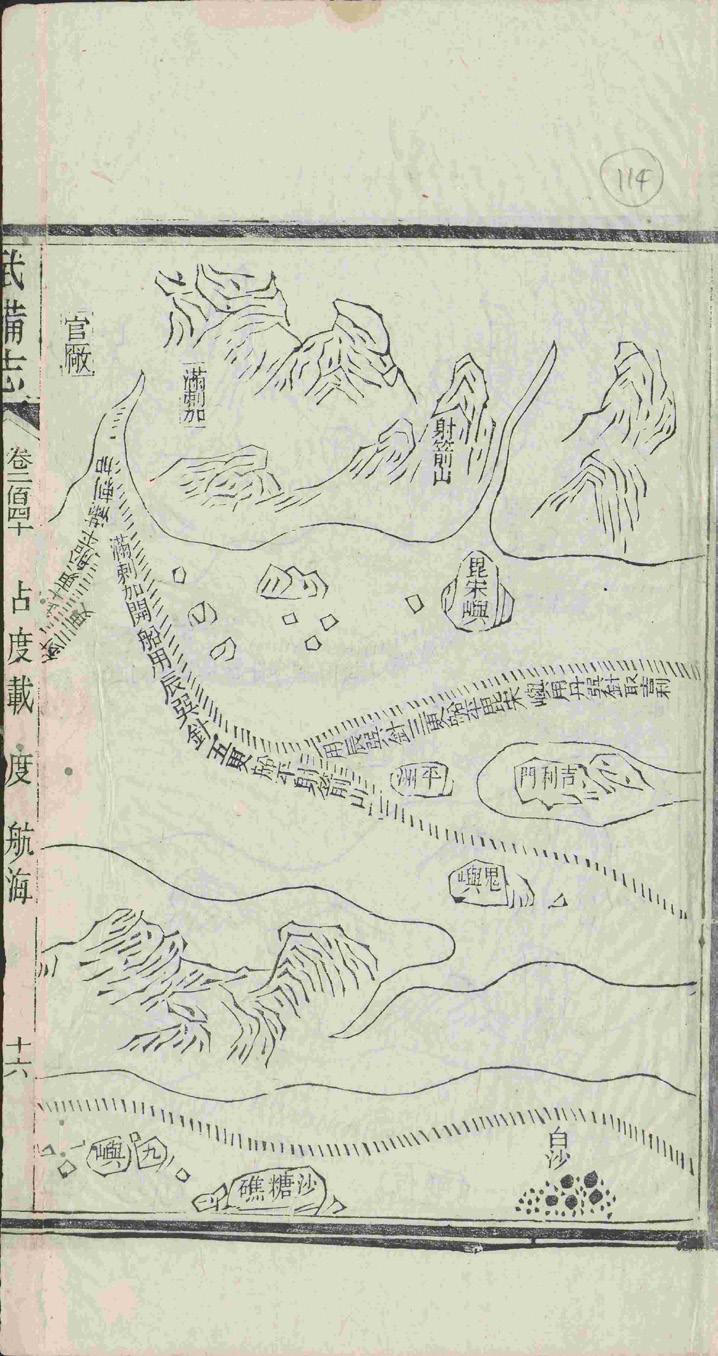
A document from the Qing Dynasty mentioning “Singapore” as a place name (1906)
Collection of Institute of Modern History Archives, Academia Sinica

明代《武备志》中的 “淡马锡” (1621年 ) 茅坤图,茅元儀(1594年至1640年)的
《武备志》,第240章,19世纪末再版。新加坡
国家图书馆提供。[馆藏号:B31655050C]
Sejarah Melayu (The Malay Annals) highlighting “Singapura” (circa 1840)
Sejarah Melayu, Munshi Abdullah, circa 1840, Collection of National Library, Singapore. [Accession no.: B31655050C]

西方的航海图因此会标记今日新加坡的位置。
Since the 16 th century, western nautical charts have marked Singapore’s location as it lies on one of Southeast Asia’s maritime routes and served as one of the regional trading ports.



Nautical chart hand drawn by Portuguese cartographers (1502)
Collection of Biblioteca Estense Universitaria
新加坡地图 (1822年) 照片由新加坡国家档案馆提供
Map of Singapore (1822)
Courtesy of National Archives of Singapore
新加坡海峡地图 (1807年)
荷兰国家档案馆珍藏
Chart of the Straits of Singapore (1807)
Collection of Nationaal Archief (Netherlands)
新加坡海峡地图 (1690年)
照片由新加坡国家档案馆提供
Chart of the Straits of Singapore (1690)

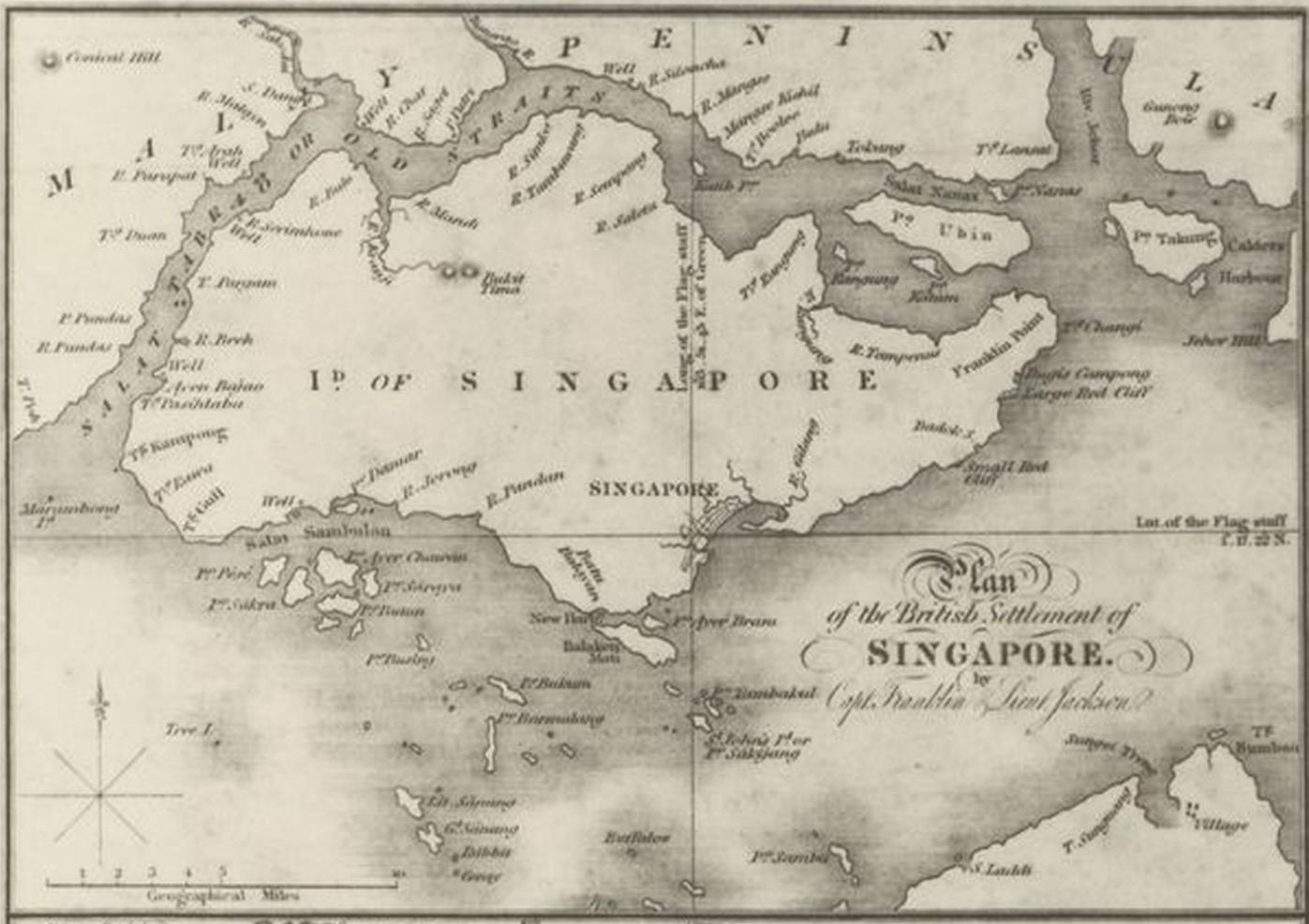

Courtesy of National Archives of Singapore
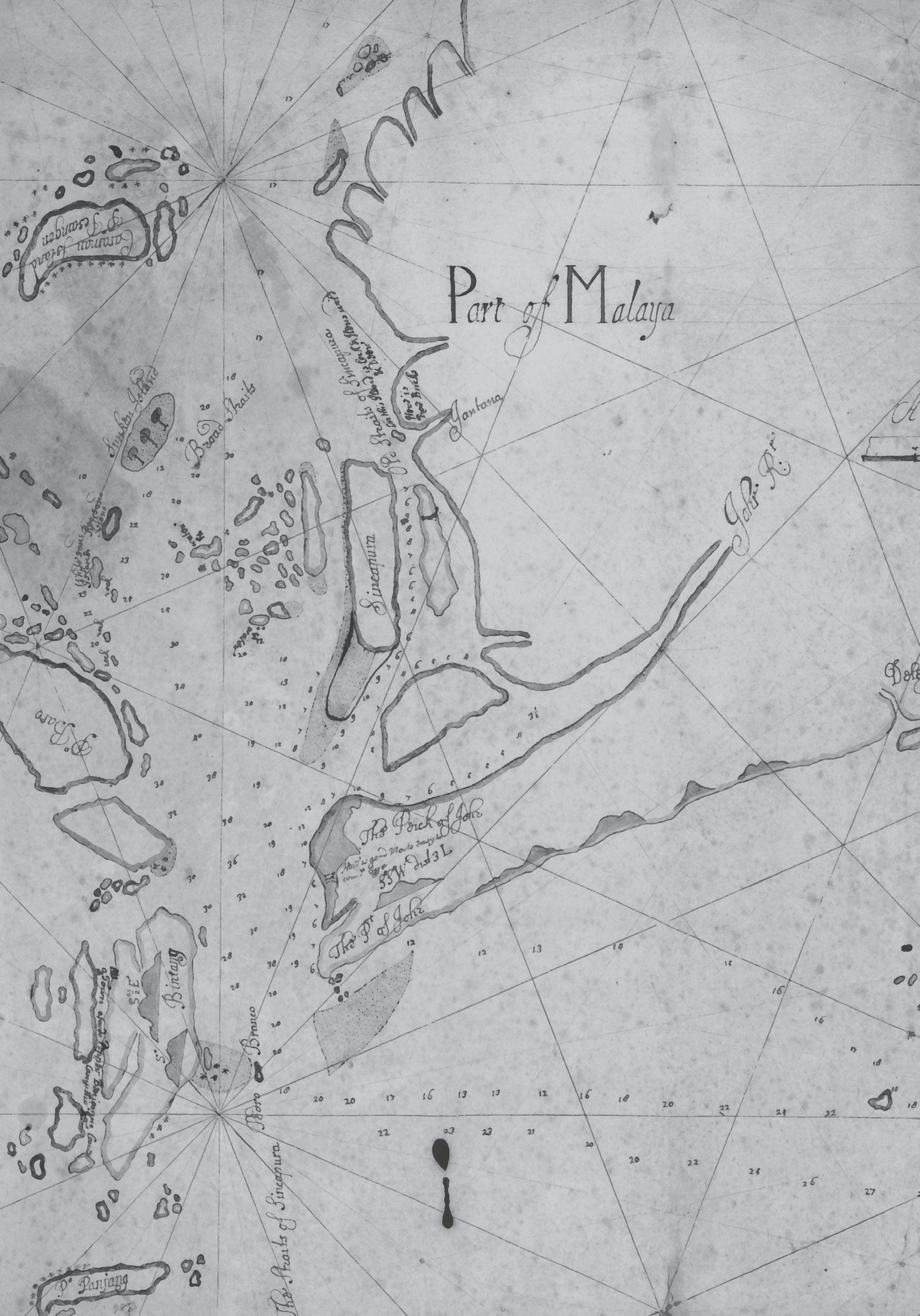
如青花瓷、青瓷、青白瓷,以及体积较大的硬
陶瓷,也有东南亚制造的陶瓷。
考古成果进一步证实,新加坡早在14世纪
就跟中国及周边地域商船进行贸易活动,具有
贸易港地位。当时,不同的货币也在新加坡
流通。
S ince 1984, archaeological excavations at Fort Canning, Empress Place and Parliament House have uncovered a treasure trove of artefacts. Archaeologists have been able to piece together Singapore’s rich heritage with the help of these artefacts to show a clearer picture of pre-colonial Singapore. The archaeological finds could be dated back to the 14 th century (Yuan Dynasty). They included tools, ironware, glassware and ancient coins. There were also ceramic
pieces produced in China, such as blue and white porcelain, celadon, white porcelain, and larger porcelain wares. Ceramics of Southeast Asian in origin were also found.
The archaeological evidence further indicates that in the early 14 th century, Singapore was already a centre in a vast trading network and was actively engaged in commerce with China and its neighbouring countries. Various coinages were used in Singapore during that period.
Blue and white porcelain bowl from Jingdezhen, Jiangxi province (Ming Dynasty)





Qianlong Tongbao (Qing Dynasty)

Spanish silver coin of Ferdin VII Dei



(正面 Front)
Jiaqing Tongbao (Qing Dynasty)



(背面 Back)
(正面 Front)
Silver coin of Republica Mexicana (1892)



Silver coin of George V King and Emperor of India, The Straits Settlements, 50 cents (1920)

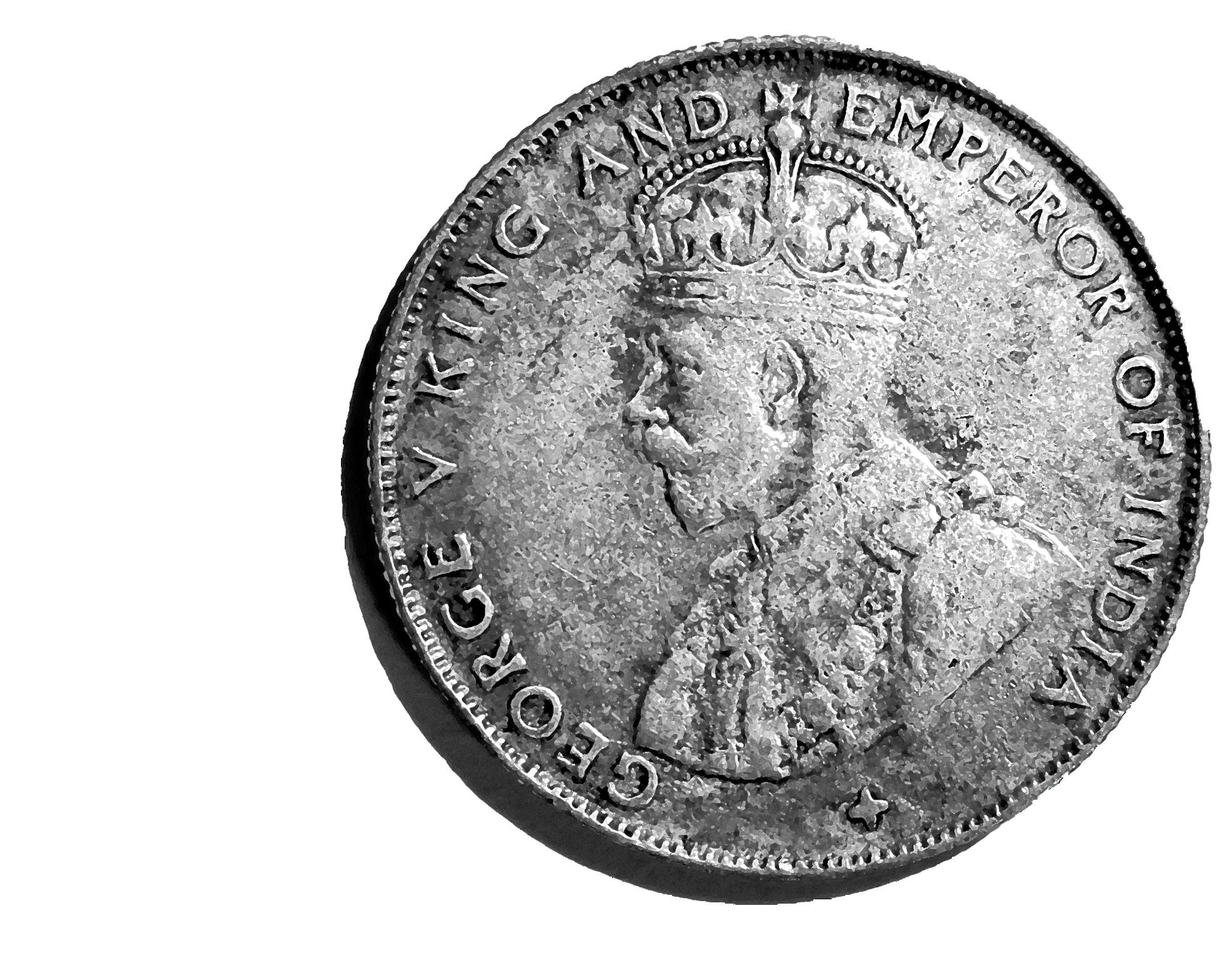
Board of Commissioners of Currency Malaya and British Borneo, 1 Dollar




Bank of China, 5 Dollars

The Japanese Government Currency, 100 Dollars

The emergence of Singapore as an immigrant society and the rise of the business community in the 20 th century.
(正面 Front)
(背面 Back)
The Chinese family in Singapore taking a group photograph (Early 1900s)

Lee Brothers Studio Collection, courtesy of National Archives of Singapore
The Malay family in Singapore taking a group photograph (Early 1900s)
Lee Brothers Studio Collection, courtesy of National Archives of Singapore

The Indian family in Singapore taking a group photograph (Early 1900s)

Lee Brothers Studio Collection, courtesy of National Archives of Singapore
The Armenian community in Singapore taking a group photograph (1917)

Armenian Church Trust Collection, courtesy of National Archives of Singapore
Kwan Yue Keng 珍藏, 照片由新加坡国家档案馆提供
View of early Singapore (Early 1890s)

Kwan Yue Keng Collection, courtesy of National Archives of Singapore
View of Singapore River and Fort Canning (1915) Courtesy of National Archives of Singapore




1 896年,本地富商李清渊﹑佘连城曾号
召百余名华商探讨英殖民政府破产法修 正条款,并试图筹办华商公所来维护华商 的权益,可惜当时没有成功落实,一直到
十年后的1906年,才有“新加坡中华商务 总会”(1917年更名为新加坡中华总商会, 简称为总商会)的创立。
清廷设立商部后,开始重视商人的经济力量,
并派员到海外组织商会。1905年底,清廷派考察外
埠商务大臣张弼士到槟城倡组商会,同年12月再前
往新加坡,本地华商在同济医院设宴款待。张弼士
在宴席中倡议成立商会,获吴寿珍等富商响应,先
后召开六次筹备会议,成功创立总商会。1906年3
月,各帮代表群聚同济医院,遴选出52位议员,
吴寿珍和陈云秋分别被推选为首任正﹑副总理。
总商会成为本地华商的最高领导机构。
它的成立反映华商能顺应时代的潮流,创造新
的组织来满足社群内外的需求,同时也意味着
本地首次出现跨方言群、跨业缘的商业团体。
总商会一直代表华商和华社,发挥团结内部、
开创商机、为民请命的角色。总商会将继续配
合政府政策,促进本国工商业发展、经济繁
荣,同时也推动文化教育活动及社会服务 同济医院 (1950年代)
Thong Chai Medical Institution (The 1950s)
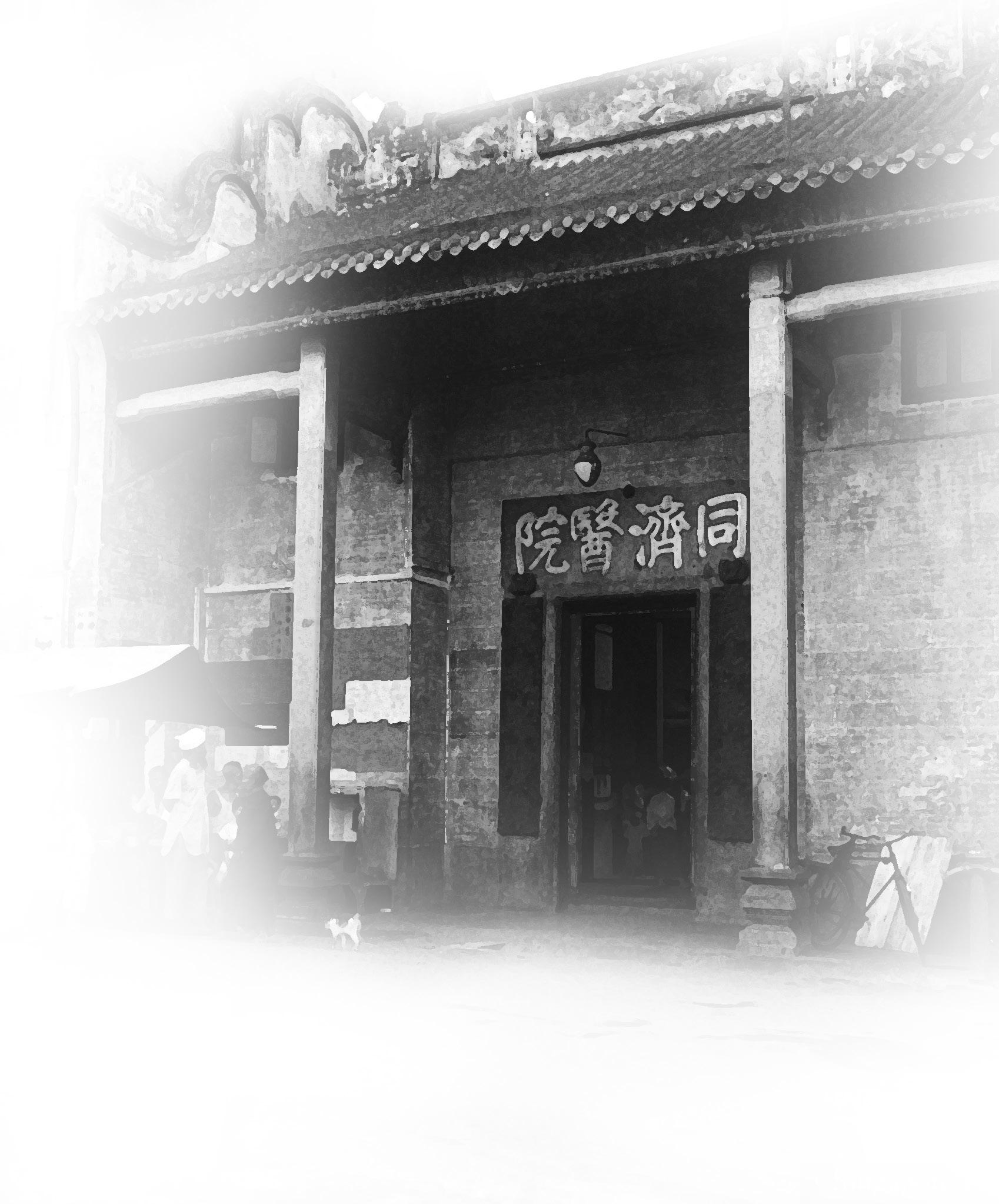
In 1896, prominent local merchants, Lee Cheng Yan and Seah Liang Seah, rallied over a hundred Chinese merchants to discuss repercussions of the provisions in the Amendment Bill to the Bankruptcy Ordinance. They contemplated the idea of forming an association to protect their interests. Unfortunately, this did not take off, and it was only 10 years later in 1906 that saw the formation of the “Singapore Chinese Chamber
of Commerce” (now known as the Singapore Chinese Chamber of Commerce & Industry, hereinafter referred to as “the Chamber”).
Since the Qing government established the “Ministry of Commerce”, there was growing recognition of the economic influence of merchants. The Qing court sent officials overseas to set up local Chinese Chambers. At the end of 1905, Chang Pi Shih, the Chinese Imperial
Commissioner for Investigating Commercial Affairs in Foreign Countries, was sent to Penang as an envoy of the Qing government to spearhead the formation of a Chinese Chamber. In December of the same year, Chang Pi Shih came to Singapore. The local merchants gathered at Thong Chai Medical Institution to meet him. During the welcome banquet, he mooted the setting up of a Chinese Chamber, and the suggestion was well-received by
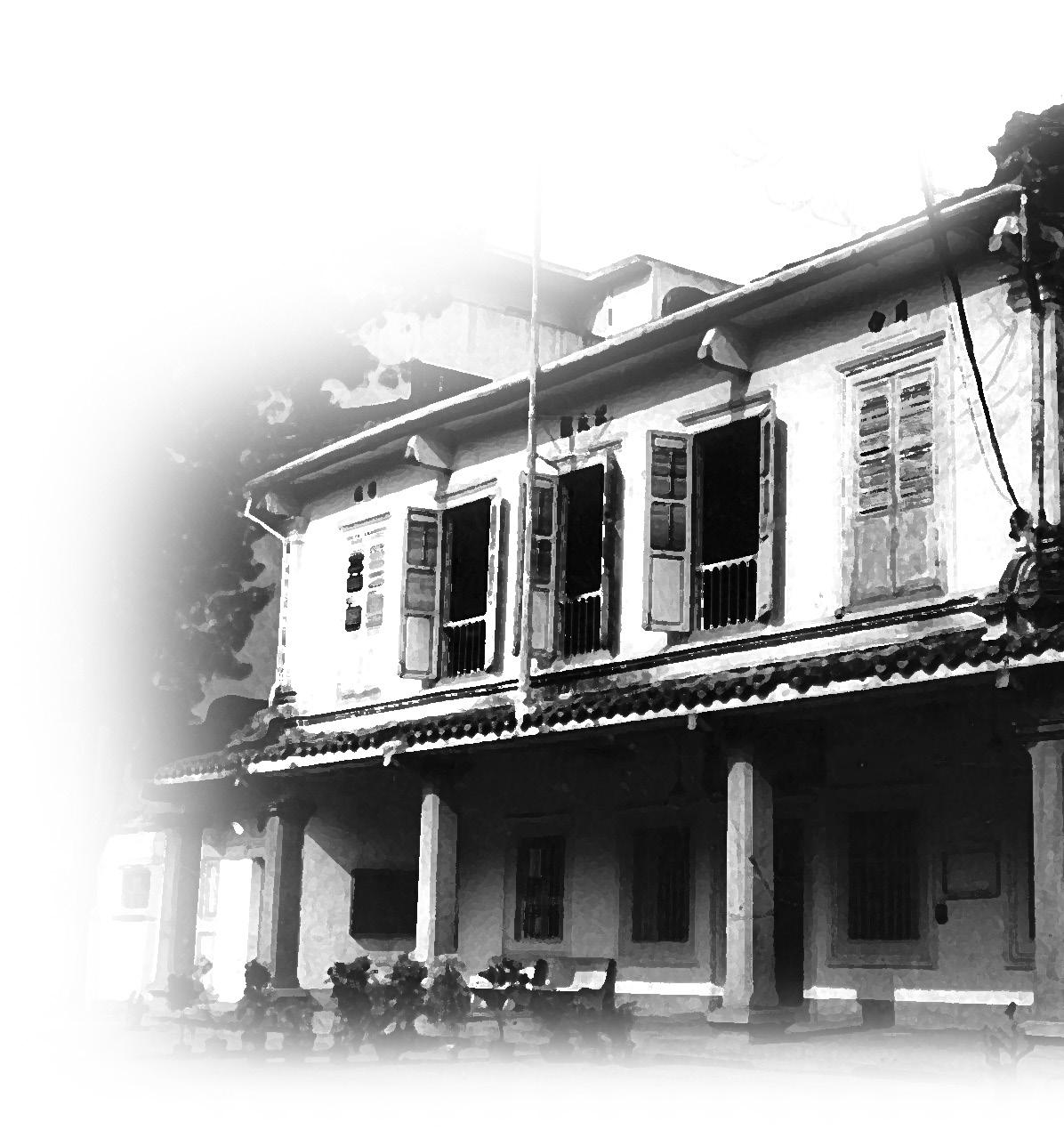
Goh Siew Tin and other Chinese merchants.
After six meetings, a consensus was reached, and the Chamber came into being. In March 1906, representatives from various clans gathered at Thong Chai Medical Institution to elect 52 Council Members. Goh Siew Tin and Tan Hoon Chui were elected to the positions of President and Vice-President respectively.
The Chamber became the apex of the Chinese business community. Its formation reflected the ability of Chinese entrepreneurs to adapt innovatively to changing times with a new organisation, which can cater to the community’s complex needs. It concurrently also marks the unprecedented establishment of a business organisation that transcends the diverse dialect groups and industries. As the Chamber is the leading body of the Chinese
merchants and community, the Chamber is unified in its efforts to create business opportunities and safeguard the interests of the local Chinese community. Furthermore, the Chamber will continue to work closely with the government and actively focus on the development of industry and commerce, the economic prosperity, cultural and educational activities as well as the community services of Singapore.

张弼士 (1841-1916年 )
Chang Pi Shih (Cheong Fatt Tze) (1841-1916)
On 18 December 1905, Lat Pau published that “Chang Pi Shih met prominent members of the Chinese community at the Singapore Thong Chai Medical Institution and advocated the setting up of a Chinese Chamber to network and promote business. Chang Pi

Shih donated $3,000 on the spot as the seed
of endowment fund. Chinese merchants from the various clans responded enthusiastically.” Subsequently, after six meetings, a consensus was reached, and the Chamber came into being on 22 February 1906. The Chamber also drafted a set of Provisional Rules, comprising a total of 12 chapters.
Various clans subsequently elected 52 Council Members to form the first Council.

The British colonial government exempted the Chamber from the registration under the Societies Ordinance.

The Qing government bestowed the official seal to the Chamber.

新加坡国立大学图书馆特藏部提供
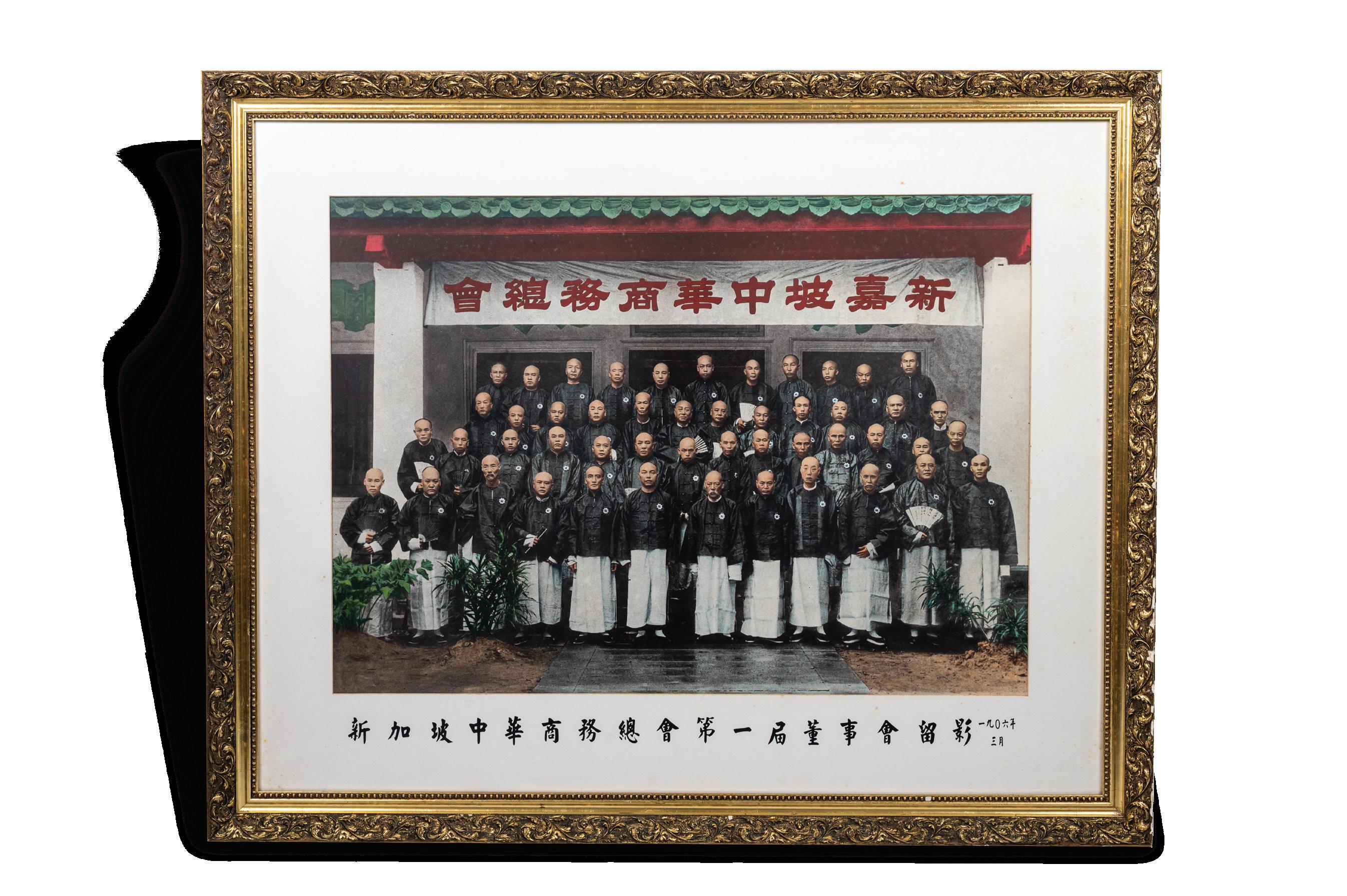
Chang Pi Shih arrived in Singapore and called for the establishment of the Chamber.
Lat Pau, 18 December 1905.
Reproduced by Special Collections, National University of Singapore Libraries
The founding Council of the Chamber (1906)
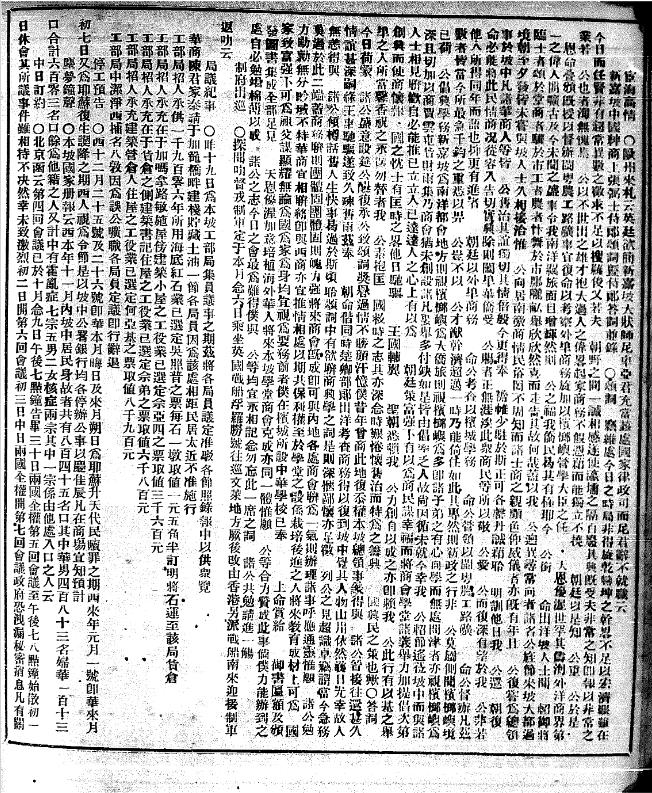
Singapore Chinese Chamber of Commerce Provisional Rules (1906)

Collection of National Archives of Thailand
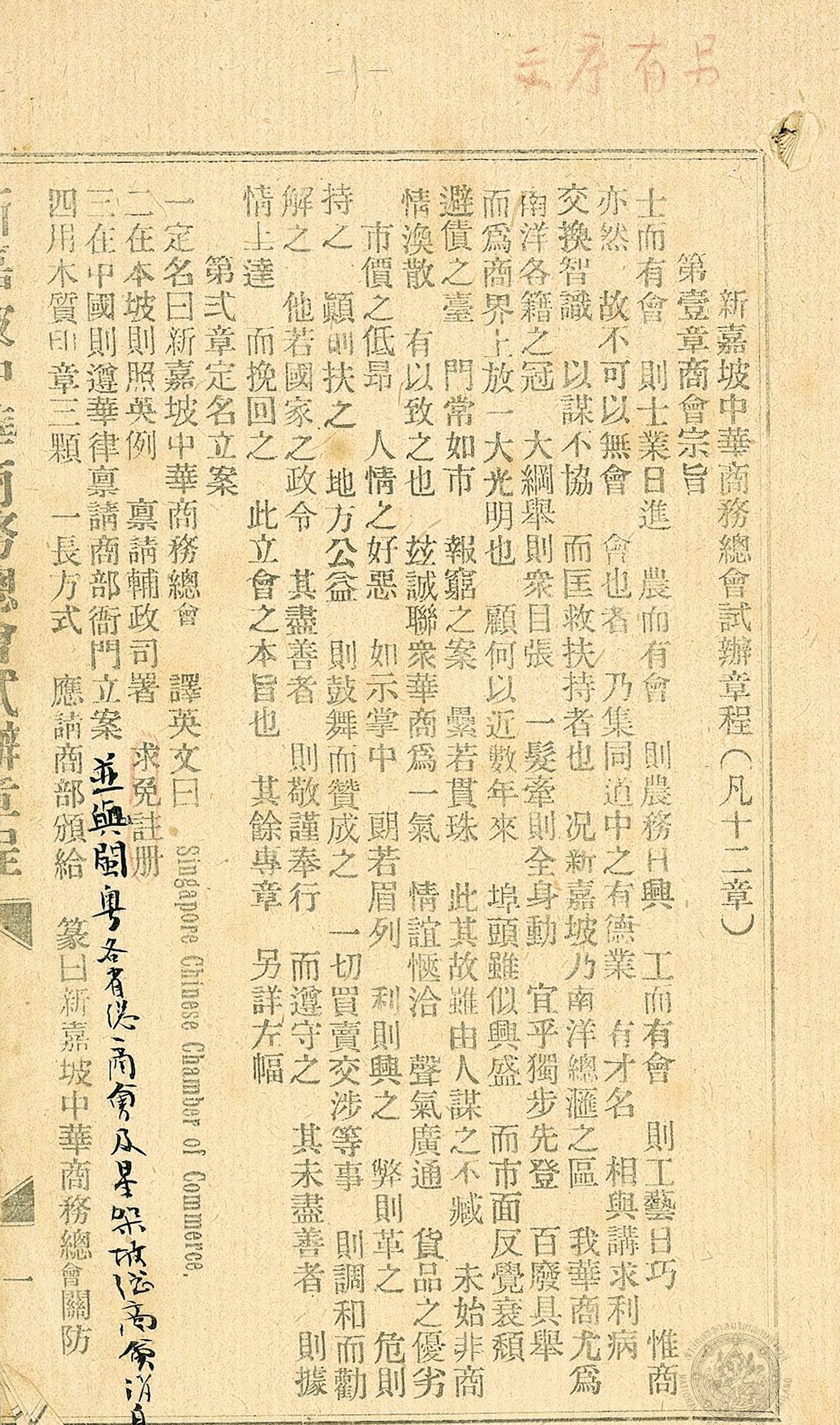
(1906年 )
Meeting minutes of the Chamber (1906)
(1907年 )
Record showing that Sun Shi Ding was appointed as the Qing Dynasty’s Consul General in Singapore (1907)


Collection of Institute of Modern History Archives, Academia Sinica


The official seal of the Chamber, Xin Jia
Po Zhong Hua Shang Wu Zong Hui Zhi
Guan Fang (1906)
The Qing government bestowed the official seal to the Chamber when the Chamber was established in 1906.

A document from Qing government’s Ministry of Commerce stating that the Qing government had agreed to the establishment of the Chamber in Singapore (1906)
Collection of the First Historical Archives of China


The President and VicePresident of the Chamber sending a letter to the Ministry of Foreign Affairs regarding the usage of the official seal (1906)
Collection of the First Historical Archives of China


The official seal of the Chamber, Xin Jia

Po Zhong Hua Zong Shang Hui Guan

Fang (1929)
The Chinese name of the Chamber was changed from Xin Jia Po Zhong Hua
Shang Wu Zong Hui to Xin Jia Po Zhong

Hua Zong Shang Hui in 1917.
In 1929, the Chinese government’s Ministry of Industry and Commerce reissued this seal to the Chamber.
新加坡中华商务总会于1917年正式更 名为新加坡中华总商会。 此枚关防为中国政府工商部于1929年 颁发给总商会。
The design of the Chamber logo in 1962 was a lion standing proudly on a shield; within the shield was a dragon ensconced within a circle and bearing the Chinese and English names of the Chamber. On either side of the shield were two stalks of grain.

The lion symbolised Singapore the Lion City, the shield was an emblem for the safeguarding of Chinese business, the dragon a traditional symbol for the ethnic Chinese, whilst the stalks of grain represented abundance. It thus represented the Chamber’s aims to promote Singapore’s trade and industry, uphold Chinese culture and customs, and propel social development.

In 2006, the Chamber launched a new logo. The concept of the five stars drew its inspiration from the Singapore flag and this galaxy of stars forms a stylised version of the Chinese character “hua” ( 華 ), or Chinese.

The three separate Cs that make up the galaxy reflect the Chamber’s founding mission: to promote Commerce and Industry, Culture and Education and Community Welfare. Partially encircling the globe is another C depicted by a powerful Chinese brush stroke, which symbolises the Chinese’s resolve to unify Chinese entrepreneurs worldwide (Connect) by building a global Chinese business network.
As a mark of respect to the founding Council Members, the new logo has preserved the original typeface of the Chamber’s Chinese name. The design also reinforces the importance of being bicultural and the need to keep abreast of the times.
三个C型轨道反映了总商会的创会宗 旨:促进工商业发展、文化与教育活动 和社会福利。外围大写C代表总商会建 立环球化网络和联系世界华商的决心。
CHAPTER 3
47 Hill Street
The Story of Chamber’s Official Premises

905年底,总商会在创会筹备期间借用同济医
院为临时办事处。次年总商会正式成立后, 向总商会董事黄金炎租用禧街49号(今禧街

47号)作为办公会址。这栋建筑是当时新加坡
四大潮州名宅之一的“大夫第”,由富商黄亚佛
黄金炎之父)于1873年兴建。1912年,总商会
以55,000叻币购置该产业成为永久会所。
果,无法付诸行动。1959年,总商会在高德根
会长领导下成立 “筹建新会所工作小组委员会”,
再向商家与社会人士筹款,最终成功筹集到
250万元筹建会所基金。
1961年旧会所被拆除后,总商会借用怡和
轩俱乐部楼下空间为临时办公室。新大厦结
合中西美学建筑设计,三年后顺利完工,于
基于会所年久失修,总商会董事陈六使
于1939年在董事会上提议原地改建为五层楼
大厦。后因欧战爆发,会所改建计划因此被
搁置。二战结束后,陈六使出任会长时重提
1964年9月20日由时任总理李光耀主持开幕。
自此,全新的总商会大厦成了本地商界之
“家”。1965年,新加坡建国。总商会在新会所
肩负起更重大的使命和责任,带领本地华人商
家配合政府政策,共同参与建设我们的国家。
Towards the end of 1905, the Chamber started using Thong Chai Medical Institution as its temporary office while preparations for formation of the organisation were underway.
In the subsequent year, after the Chamber was officially established, the Chamber leased 49 Hill Street (today’s 47 Hill Street) from the Chamber’s Council Member, Wee Kim Yam, as its official premises. The building, one of Singapore’s four residences built in typical Teochew architectural design and style, was
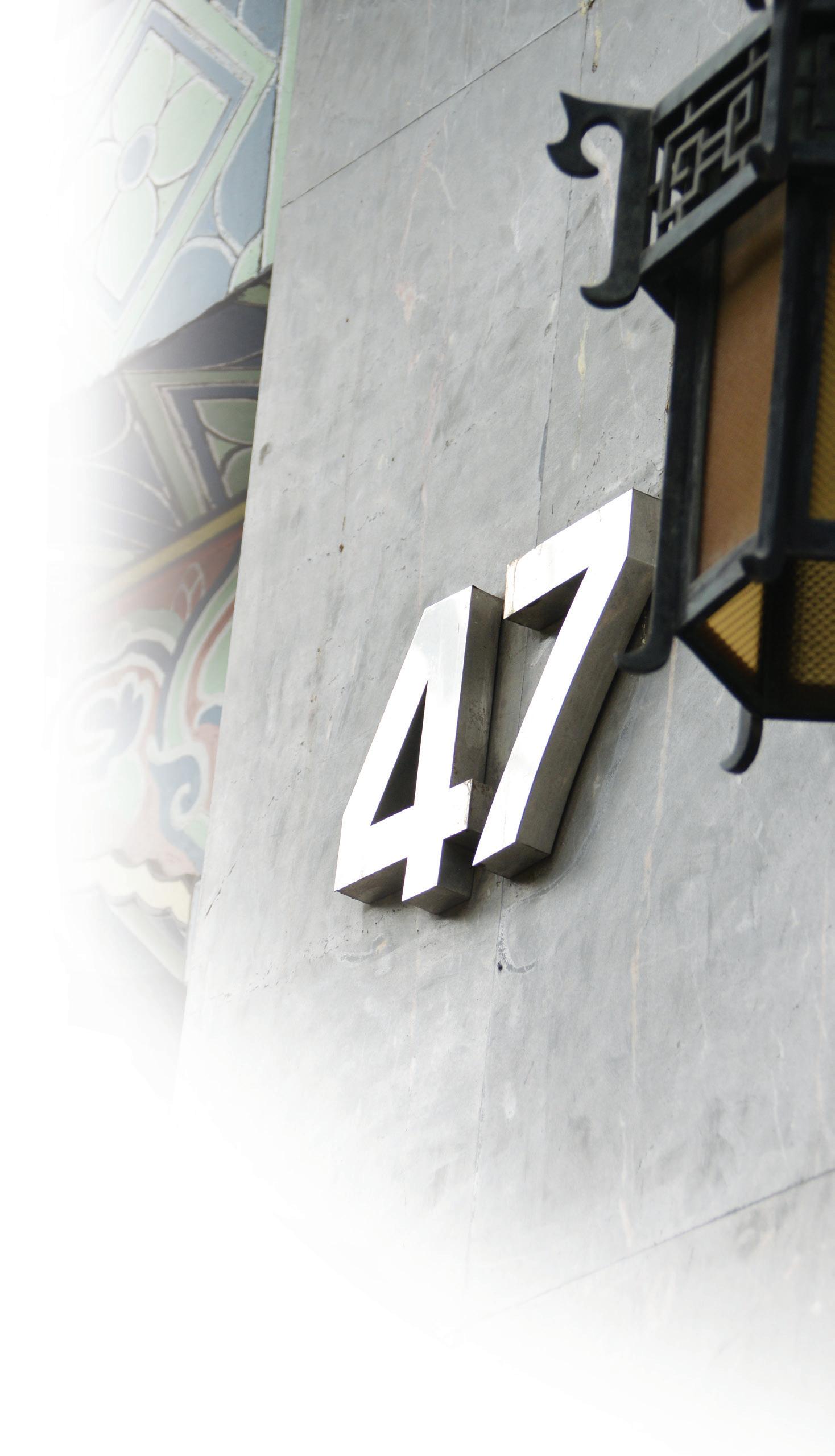
named Da Fu Di. It was built by Wee Ah Hood, the father of Wee Kim Yam, in 1873. In 1912, the Chamber bought over the building with 55,000 Straits Dollars and made it its permanent premises.
In 1939, due to wear and tear over the years, Tan Lark Sye, who was then the Chamber’s Council Member proposed to rebuild the original structure into a five-storey building. However, these plans were shelved as war
broke out in Europe. After World War II ended, Tan Lark Sye was elected as the president and re-started the issue. However, two attempts at fund-raising by the Councils in 1952 and 1954 were unsuccessful. As a result, the effort came to a halt. In 1959, under the leadership of Chamber's President Ko Teck Kin, the Chamber set up a sub-committee to raise funds from businessmen and the community at large. The Chamber finally managed to raise $2.5 million for its new premises.
After the old Chamber premises was demolished in 1961, the Chamber leased a space at Ee Hoe Hean Club as its temporary office. The new Chamber building, integrated with the essence of both Oriental and Western architectural styles, took three years to complete.
On 20 September 1964, Lee Kuan Yew, then Prime Minister of Singapore, officiated the opening ceremony of the Chamber building. Since then,
the new premises became the "home" of the local business community. After Singapore gained independence in 1965, the Chamber shouldered an even greater responsibility in complementing the government’s efforts in nation-building and leading local Chinese businesses to build a better future for our country.

承租禧街会所会议记录 (1906年)


1906年4月21日,董事会决议承
Meeting minutes recording the decision to lease 47 Hill Street premises (1906)
On 21 April 1906, the Council decided to lease Da Fu Di, today’s 47 Hill Street, as its premises. The monthly rental was 150 Straits Dollars.

禧街47号建筑平面图 (1934年 )
新加坡国家档案馆珍藏

Floor plan of 47 Hill Street (1934)
Courtesy of National Archives of Singapore

The main entrance of the Chamber’s original location and the exterior of the main premises (The 1950s)
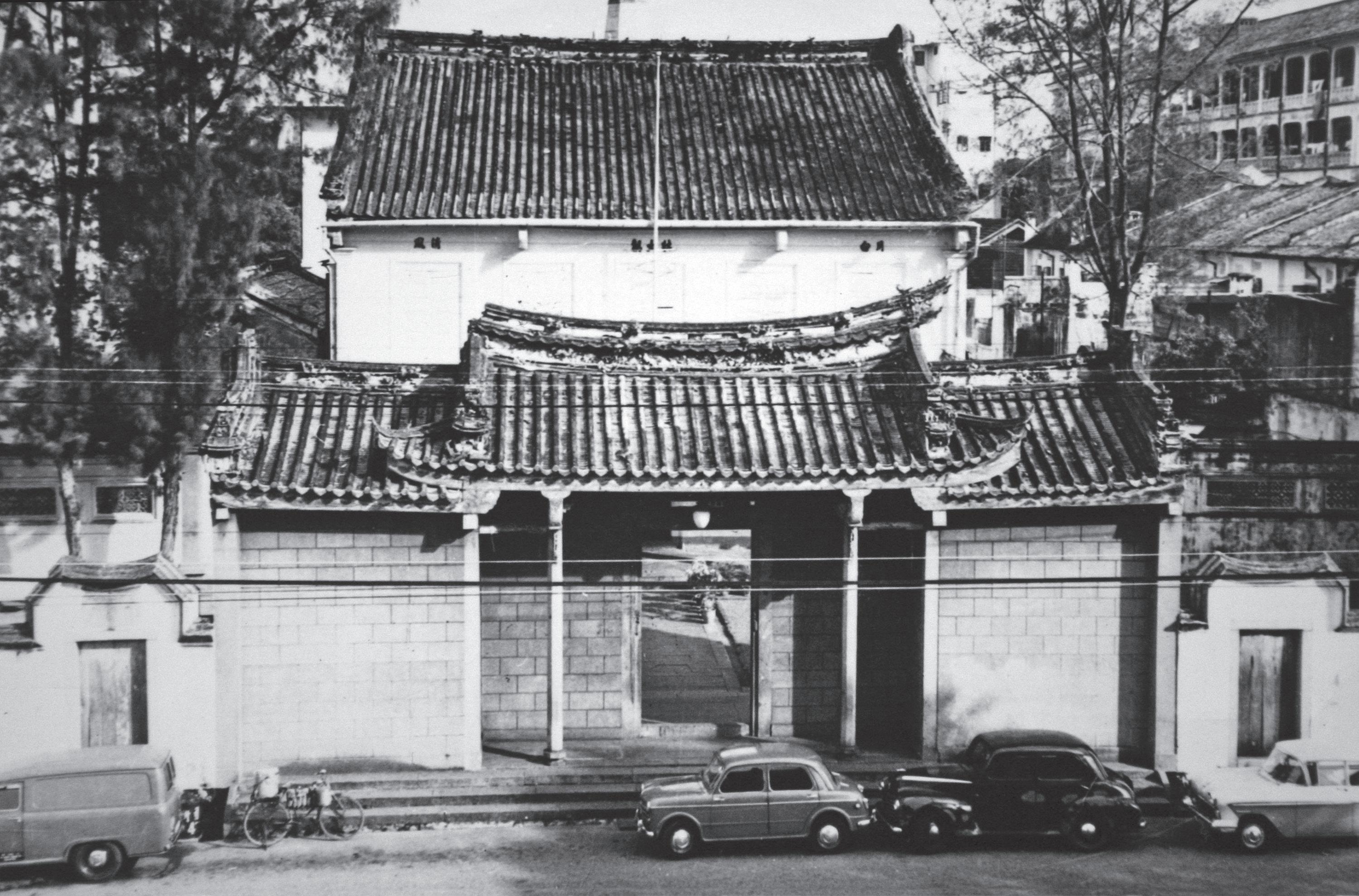



The first floor of the original Chamber premises (The 1950s)

The second floor of the original Chamber premises used for meetings (The 1950s)


Meeting minutes recording the decision to purchase the 49 Hill Street premises (1912)
On 3 February 1912, the Council Members of the Chamber bought the premises with 55,000 Straits Dollars and made 49 Hill Street its permanent premises.
商会新大厦于1964年落成。新大厦高10

层,中西合璧,外观是中式宫殿的风格,
朱红门、琉璃瓦、雕梁画栋、五彩缤纷、配以中国花
梨木家具的陈设,充满东方美学。镇守大门的石狮威
武神气,门前围墙则是两面九龙壁。
The new Chamber building was completed in 1964. The Chamber building is 10 storeys high, integrating
the essence of both Eastern and Western architectural styles. The façade
of the building is reminiscent of Chinese palace architecture seen in northern China. Vermilion doors, glazed tiles, wall motifs
and Chinese rosewood furniture exude an Oriental flavour.
A magnificent pair of stone-carved lions guard the entrance, lending much pomp and circumstance; while the flanking walls of the main entrance feature a motif of nine dragons (Nine Dragon Relief Walls) on each side.

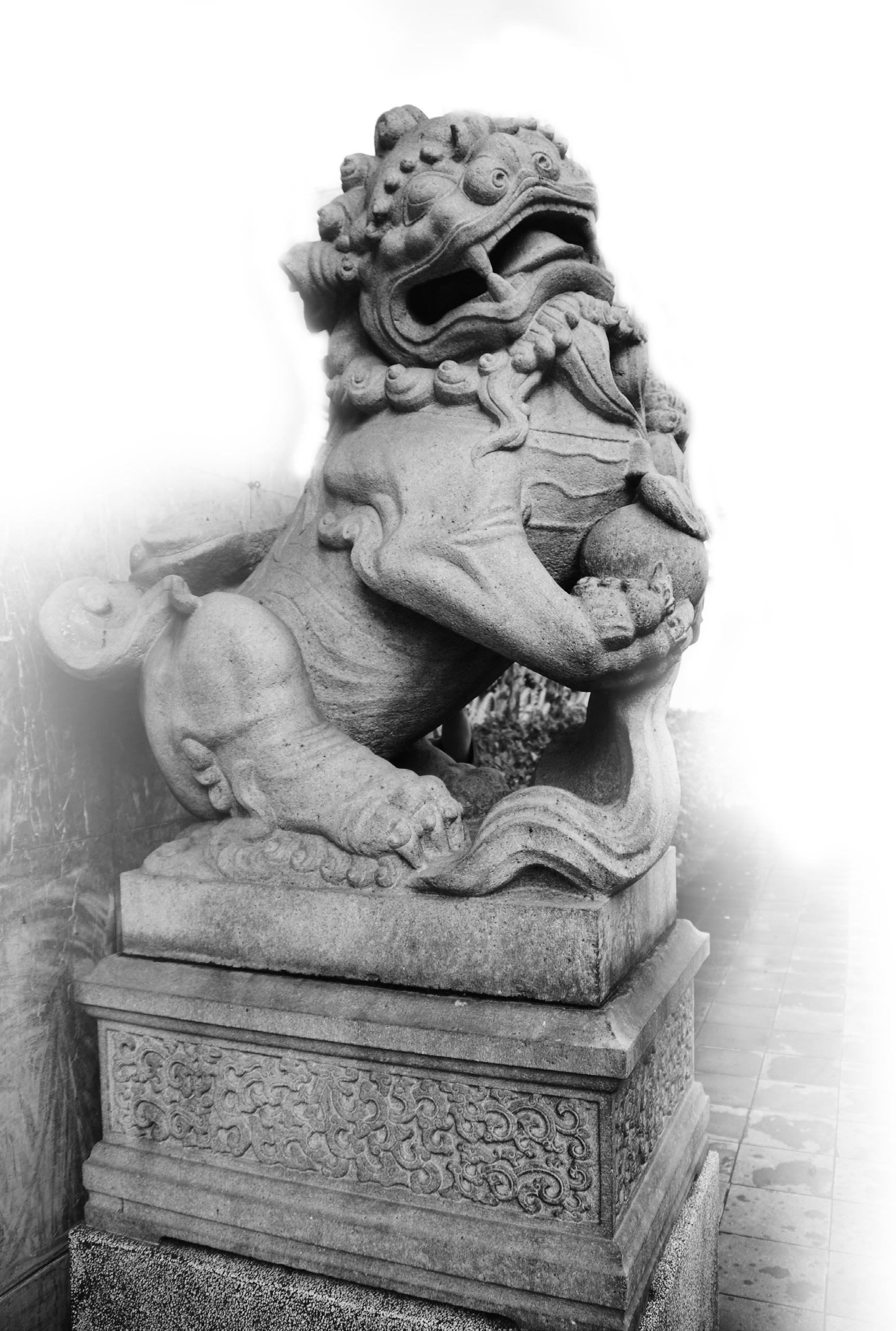
The Chamber's signboard being removed (1961)
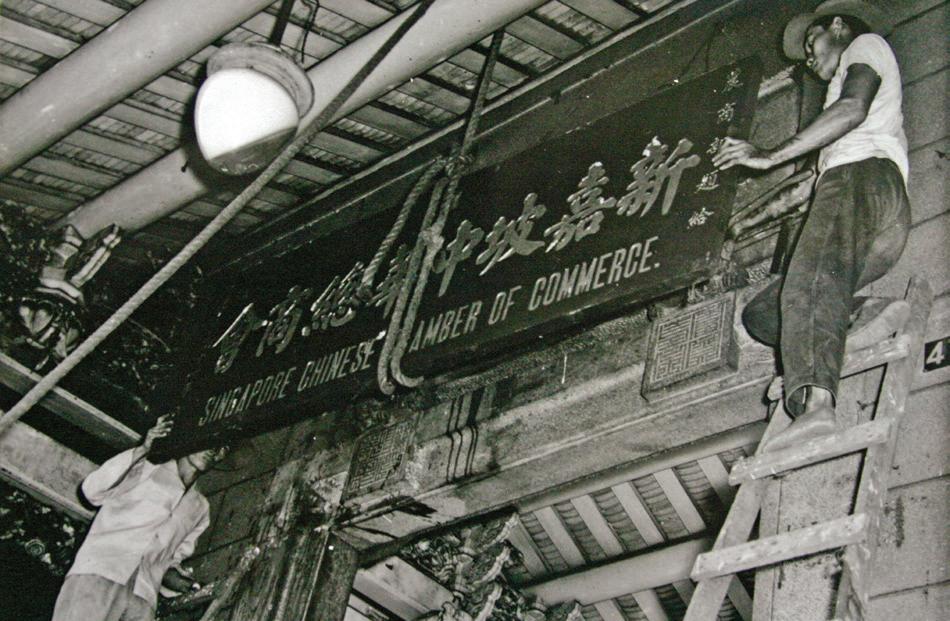
Council Members posing with the Chamber’s signboard after it was removed from the old premises (1961)

奠基仪式 (1962年 )
Lee Kong Chian laying the foundation stone for the new building (1962)
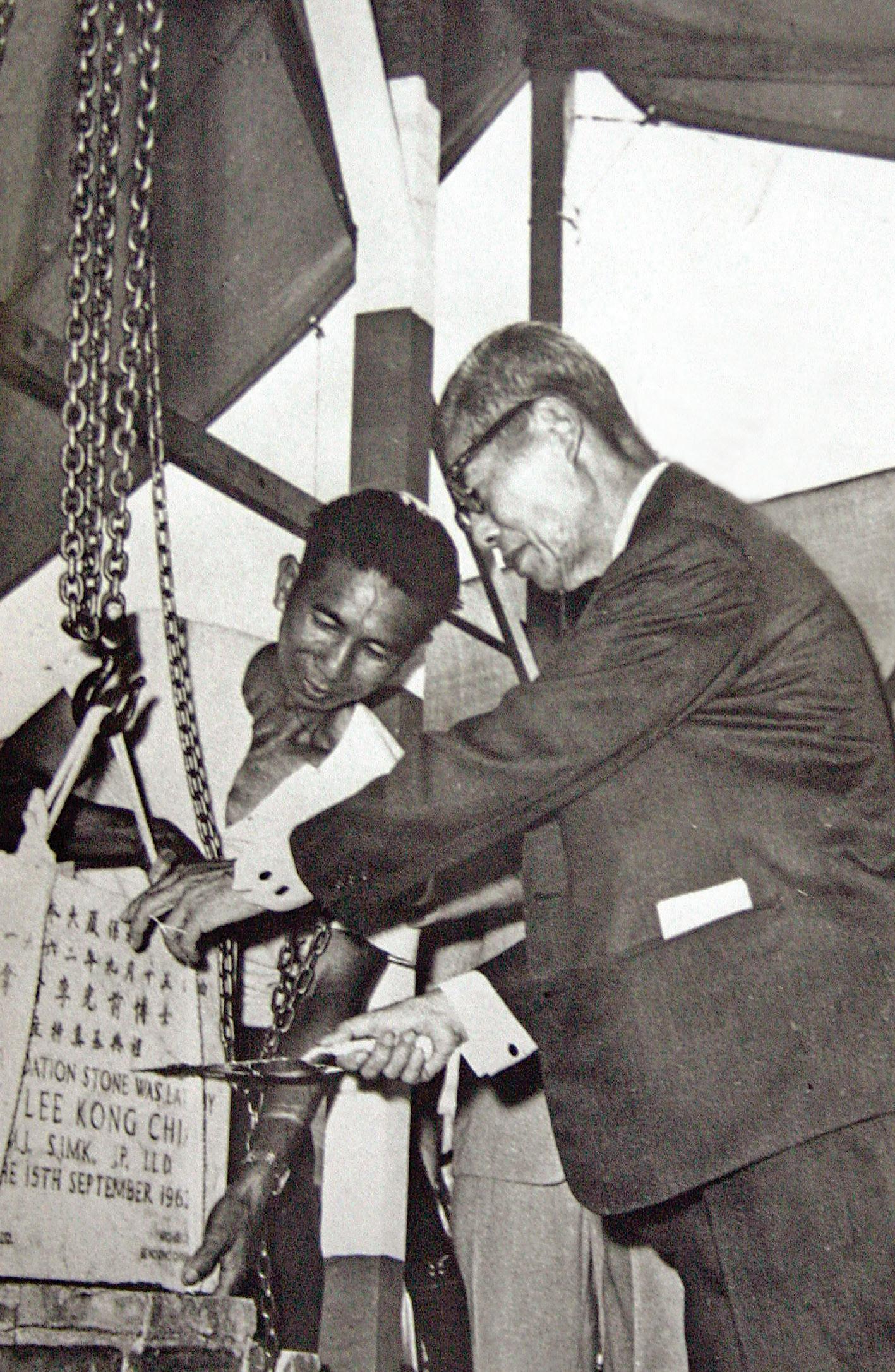

The opening of the new Chamber building (1964)
The architectural design of the new Chamber building presented the integration of essence from both Eastern and Western architectural styles.
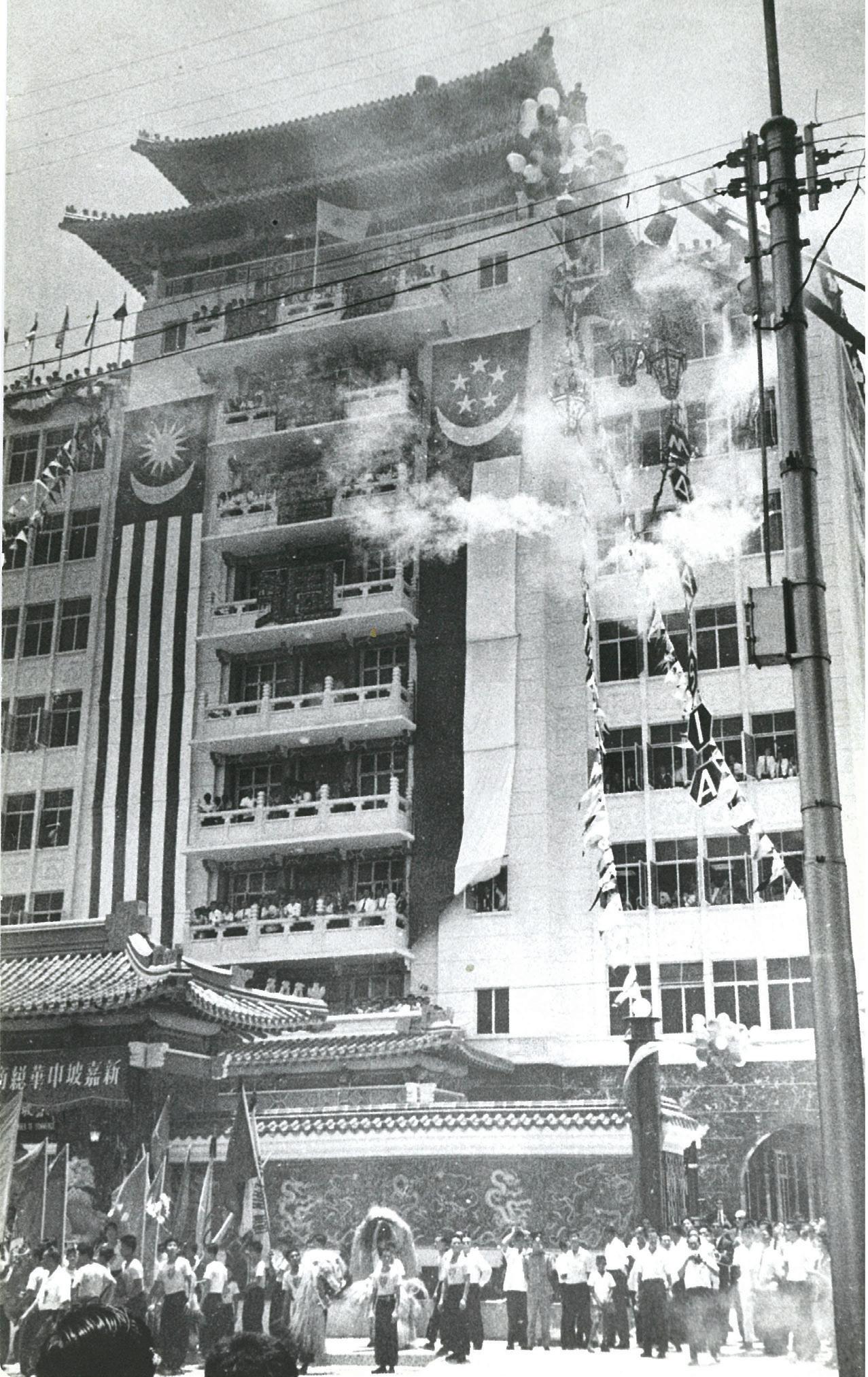
李光耀总理在总商会新大厦落成典礼上的演讲 (1964年9月20日 ):
这座建筑象征一个伟大而骄傲的传统。它代表安稳,因为
它具体说明一个种族远渡重洋来到这块土地,克勤克俭建立
基业,而且和本地居民一起努力,共同在此落地生根。
Lee Kuan Yew, Prime Minister, delivered a speech at the opening of the new Chamber building (20 September 1964):


The building is a symbol of a great and proud heritage. It speaks of security, for it is concrete proof of the qualities of thrift and industry of a people who came to the South Seas and made good and settled with the indigenous people here. It is the security of achievement. It is immovable proof that the Chinese had put their lot with the others in the country.
总商会新大厦落成典礼 (1964年 )
新加坡报业控股旗下海峡时报
The opening ceremony of the new Chamber building (1964) The Straits Times © Singapore Press Holdings Media Limited. Reprinted with permission
九龙壁 (1964年 )
Nine Dragon Relief Walls (1964)

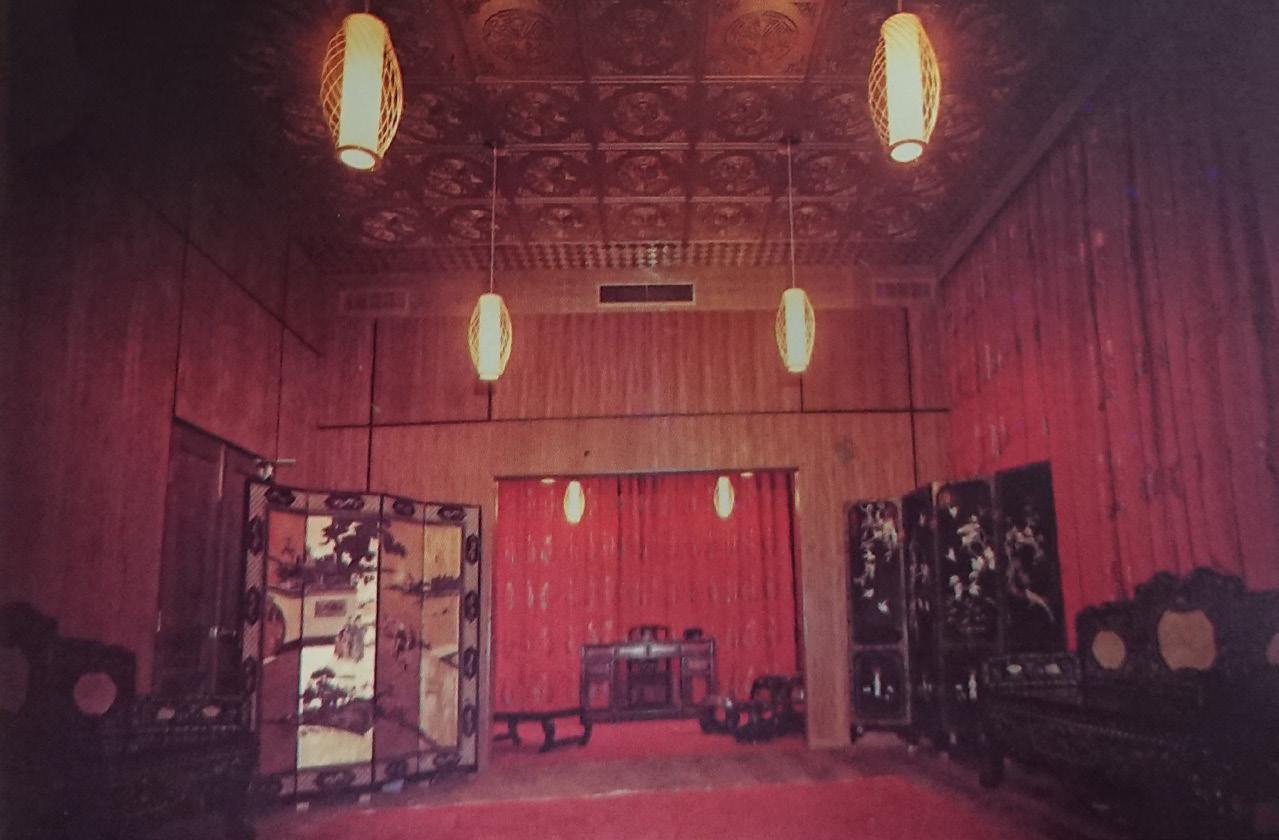
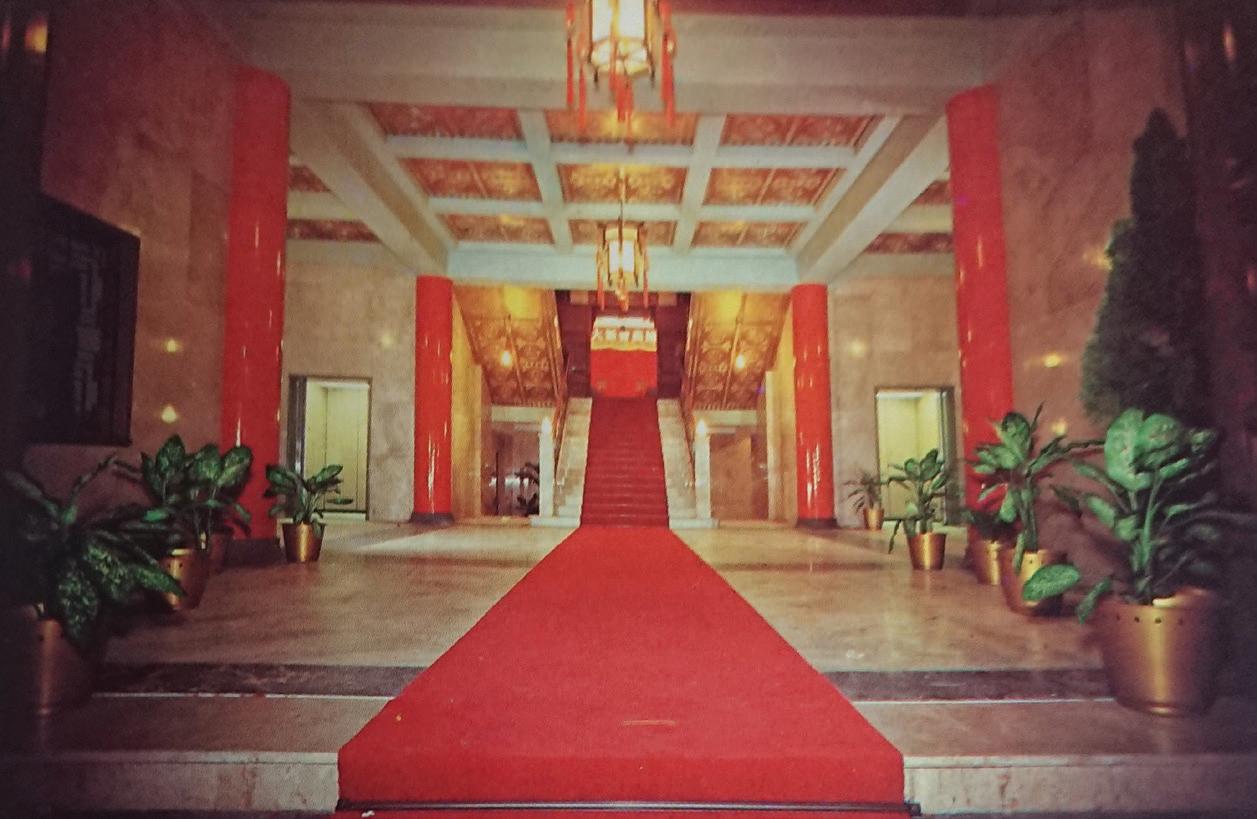
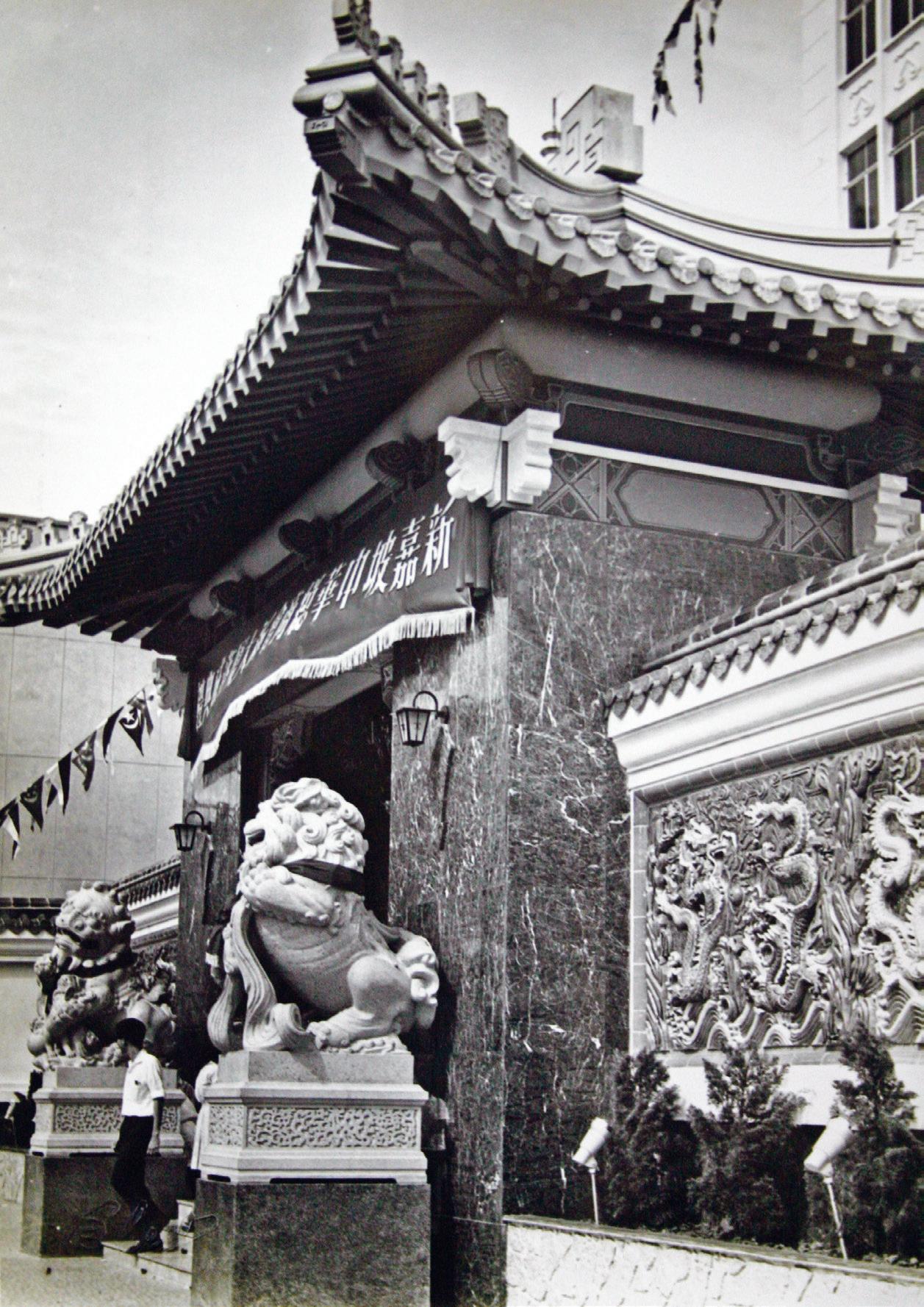

时任总理李光耀

The guest-of-honour for the opening of the new Chamber building (1964)
Lee Kuan Yew (right), then Prime Minister, with Ko Teck Kin, then President of the Chamber (left), at the opening of the new Chamber building.

32nd Council of the Chamber taking a group photograph in front of the new Chamber building (1964)

(1964年 )
(右) 与高德根 会长 (左) 于开幕典礼上留影。

)
纪民贞捐赠
The invitation card for the opening of the new Chamber building (1964)
Donated by Kee Meng Cheng
The World is for Everyone (1964)
In 1964, Kee Meng Cheng, a nine-year-old student from Tuan Mong School, presented a piece of calligraphy, which read “The World is for Everyone” ( Tian Xia Wei Gong) to congratulate the Chamber on the completion of its new building.

A photograph of Teo Peng Hoe (14 years old) and the model of the new Chamber building (1964)


Reproduced with permission of Teo Peng Hoe
A 3-dimensional architectural model of the new Chamber building (1964)
In 1963, Teo Peng Hoe, a secondary school student, personally built a 3-dimensional model of the new Chamber building’s architecture. He presented it as a gift to the Chamber during the opening of the new Chamber building.
赵炳和(14岁 ) 与总商会新大厦模 型合影(1964年 )
总商会新大厦模型 (1964年 ) 1963年,中学生赵炳和亲手制作新大 厦立体模型, 并于大厦落成开幕典礼 上送给总商会。
高瞻远瞩
Showing Great Foresight (1964)
Ngee Ann College presented the “Showing Great Foresight” ( Gao Zhan Yuan Zhu ) calligraphy to the Chamber to celebrate the completion of the new building in 1964.


The Hong Kong Cotton Made-up Goods Manufacturers Association Ltd presented the plaque “Economic Hub” ( Jing Ji Shu Niu ) to the Chamber to celebrate the completion of the new building in 1964.

新加坡中华总商会建筑新大厦
征信录》(1964年 )

List Of Donors Of The Singapore Chinese Chamber Of Commerce Building Fund (1964)

总商会新大厦建筑基金纪念瓷相 (1964年 )




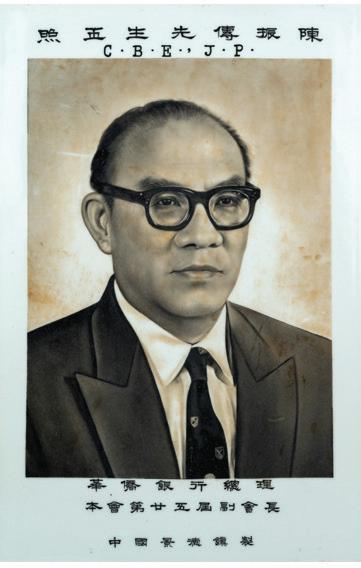


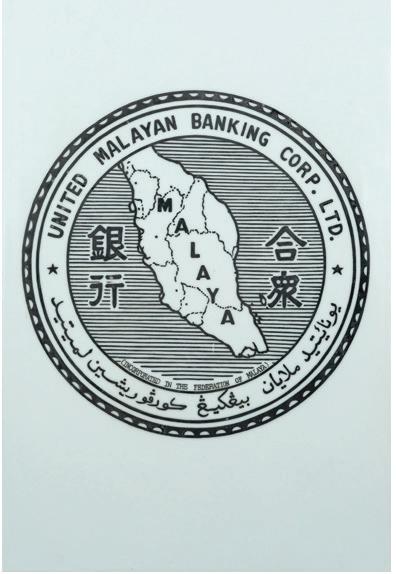



总商会通过本地顺泰祥瓷莊,从中国江西景德镇订 制一批瓷相,以感谢捐款者对新大厦重建的贡献。

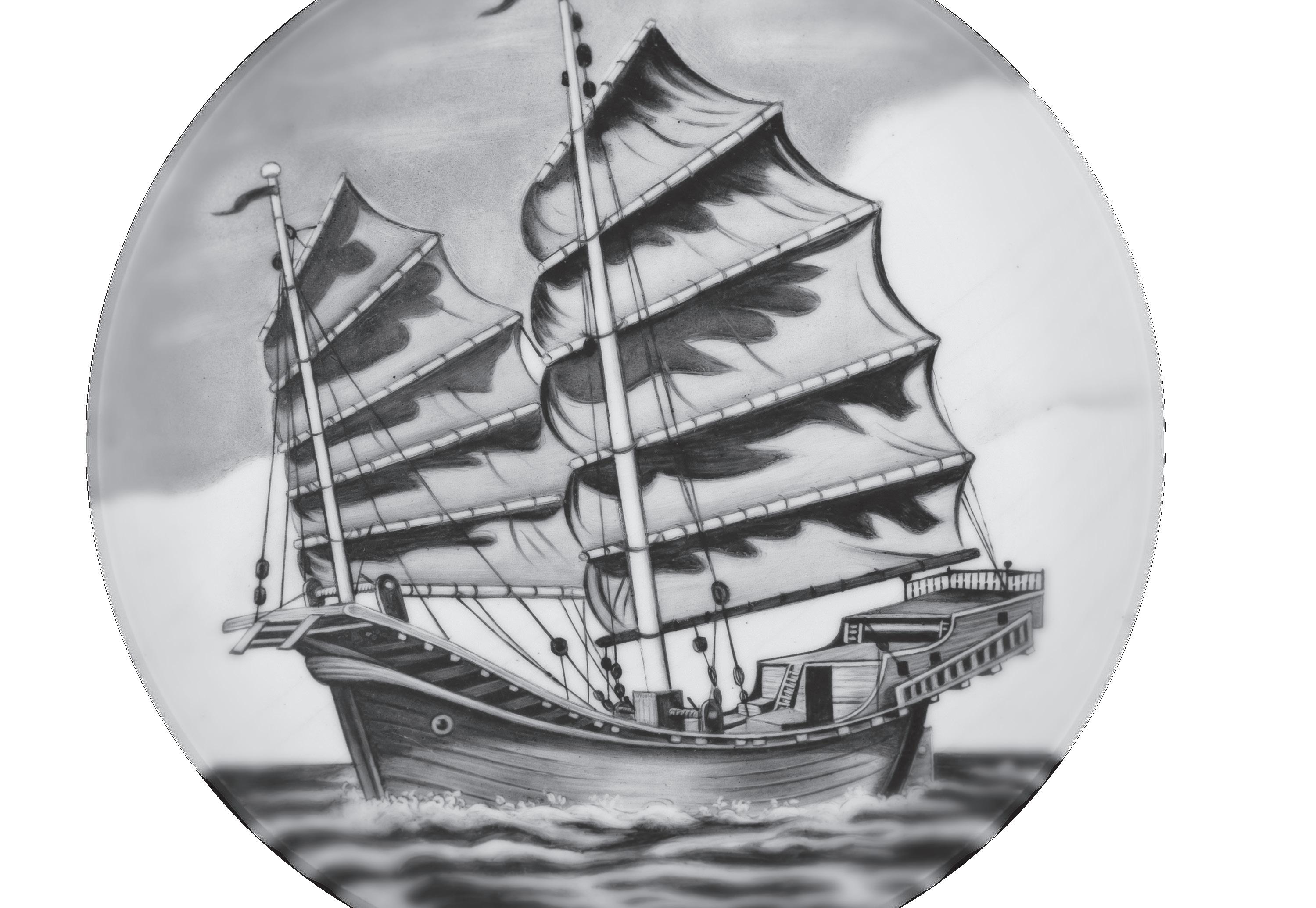
The porcelain portraits of the donors who had contributed to the Singapore Chinese Chamber of Commerce New Building Fund (1964)



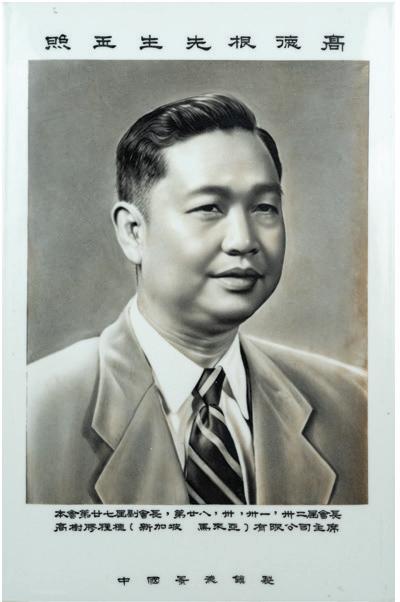
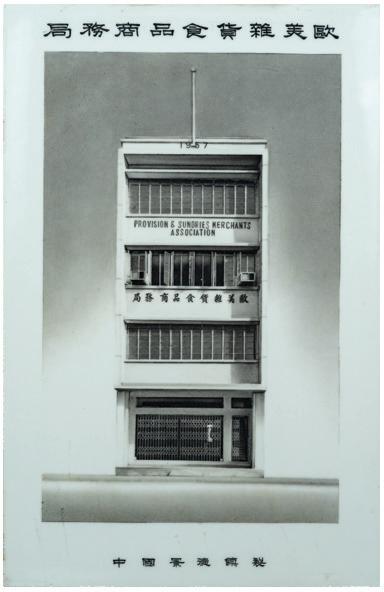
Through Soon Thye Cheong, local ceramic importer and wholesaler, the Chamber specially ordered a set of donor porcelain portraits from Jingdezhen, Jiangxi province in China, as an acknowledgement to the donors for contributing to the construction of the new Chamber building.

匾 (1962年 )
1962年9月15日,李光前为
The plaque to commemorate the construction of the new Chamber building (1962)
On 15 September 1962, Lee Kong Chian laid the foundation stone for the new Chamber building.


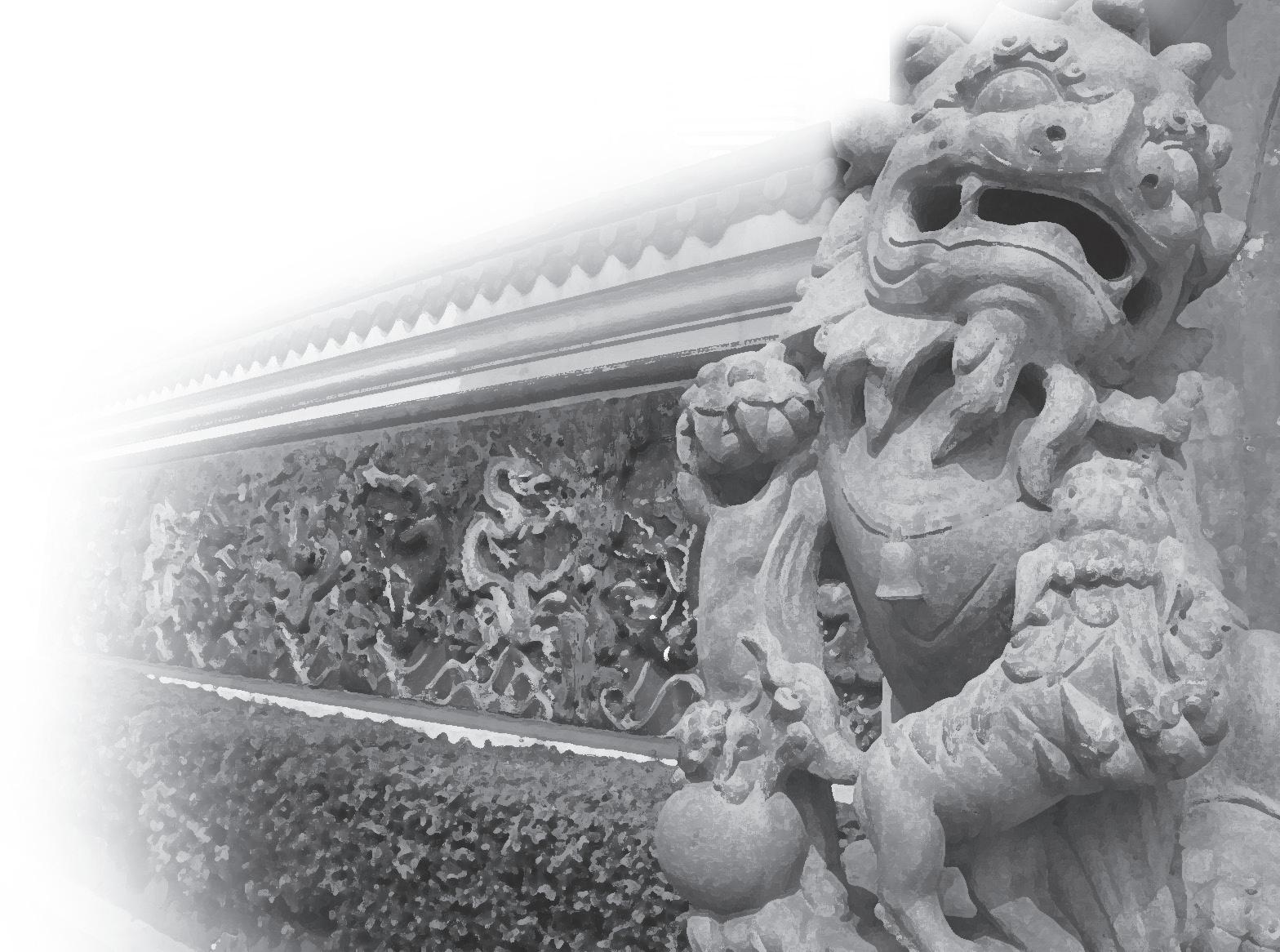
The plaque to commemorate the opening ceremony of the new Chamber building (1964)
On 20 September 1964, Lee Kuan Yew, the first Prime Minister of Singapore, officiated the opening of the new Chamber building.

信﹑效忠﹑回馈﹑创新是总商会
华商精神的四大精髓,也是总商会的 发展基石。身为百年社团及世纪商团,总商会
谨守华商精神,不忘初心、与时俱进,牢记其
社会责任与角色。
华商精神是总商会的内在驱动力,四面并行、
特质相赋,也是当今总商会华商的道德准则和
行为规范。
就总商会的华商精神价值而言,“诚信”包
含诚实、守信、正直等品德;“效忠”具备效
命、忠诚、牺牲与奉献等特质;“回馈”体现
助人为善、关怀弱势、资源分享等作为;“创
新”则指创意、革新,具有与时并进的思维。
总商会华商文化馆的典藏包括档案文献﹑
关防﹑印章﹑佩章﹑古币﹑陶瓷﹑书法﹑绘画﹑
匾额﹑工艺礼品等,每一件文物都是总商会华商
文化与精神的载体,让读者有机会认识总商会的
文化瑰宝和本地华商的作为与成就,具体展示

“诚信为本﹑效忠为国﹑创新为先、回馈为民”
的精神理念。
Integrity, Loyalty, Giving back to society, and Innovation are four essences of the Chamber Chinese Entrepreneurial Spirit. They are also the developmental cornerstone of the Chamber. As a century-old trade association, the Chamber strictly upholds the Chinese Entrepreneurial Spirit; not forgetting its roots while moving ahead with the times and remembering its responsibilities and duties for society.
Based on the core values, “Integrity” means being honest, keeping promises and being forthcoming in thought and deed; “Loyalty” signifies committing our lives to the country, being faithful, making sacrifices and contributing to society and nation-building; “Innovation”
refers to crafting new ideas, striving to be creative and in the lead, upgrading with the times and being forward thinking; “Giving back to society” denotes doing philanthropic work,
helping the needy, and sharing resources.
The Chamber Chinese Entrepreneurial Spirit is the motivational push factor for the Chamber.
When all four core values converge, each having its special traits, that is the epitome of the Chamber Chinese Entrepreneurial Spirit.
The SCBCH collection includes archival materials, seals, badges, antique coins, porcelains, calligraphy, painting, plaques
and valuable gifts. Every artefact embodies the Chamber Chinese Entrepreneurial Culture and Spirit, giving visitors the opportunity to understand the cultural treasures and achievements of the Chinese local businessmen by showcasing the essence of "Integrity, Loyalty, Giving back to society and Innovation".
(1906年 )
Members of the Chamber in the Year of Bingwu (1906)

总商会的木刻贺联 (1906年 )
The couplet engraved in two wooden blocks was presented to the Chamber by Sun Shi Ding, Qing Dynasty’s Consul General, in Singapore (1906)


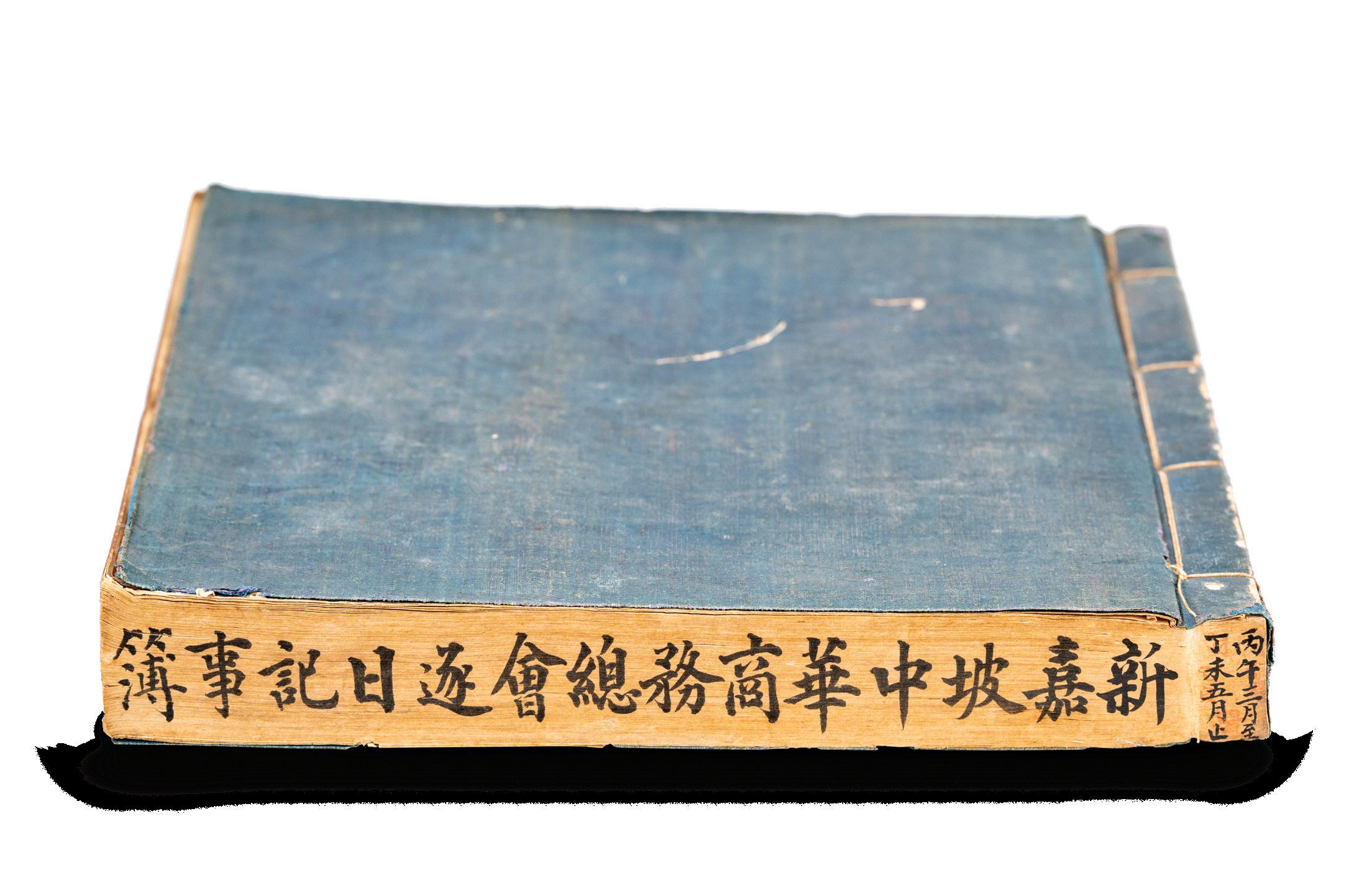
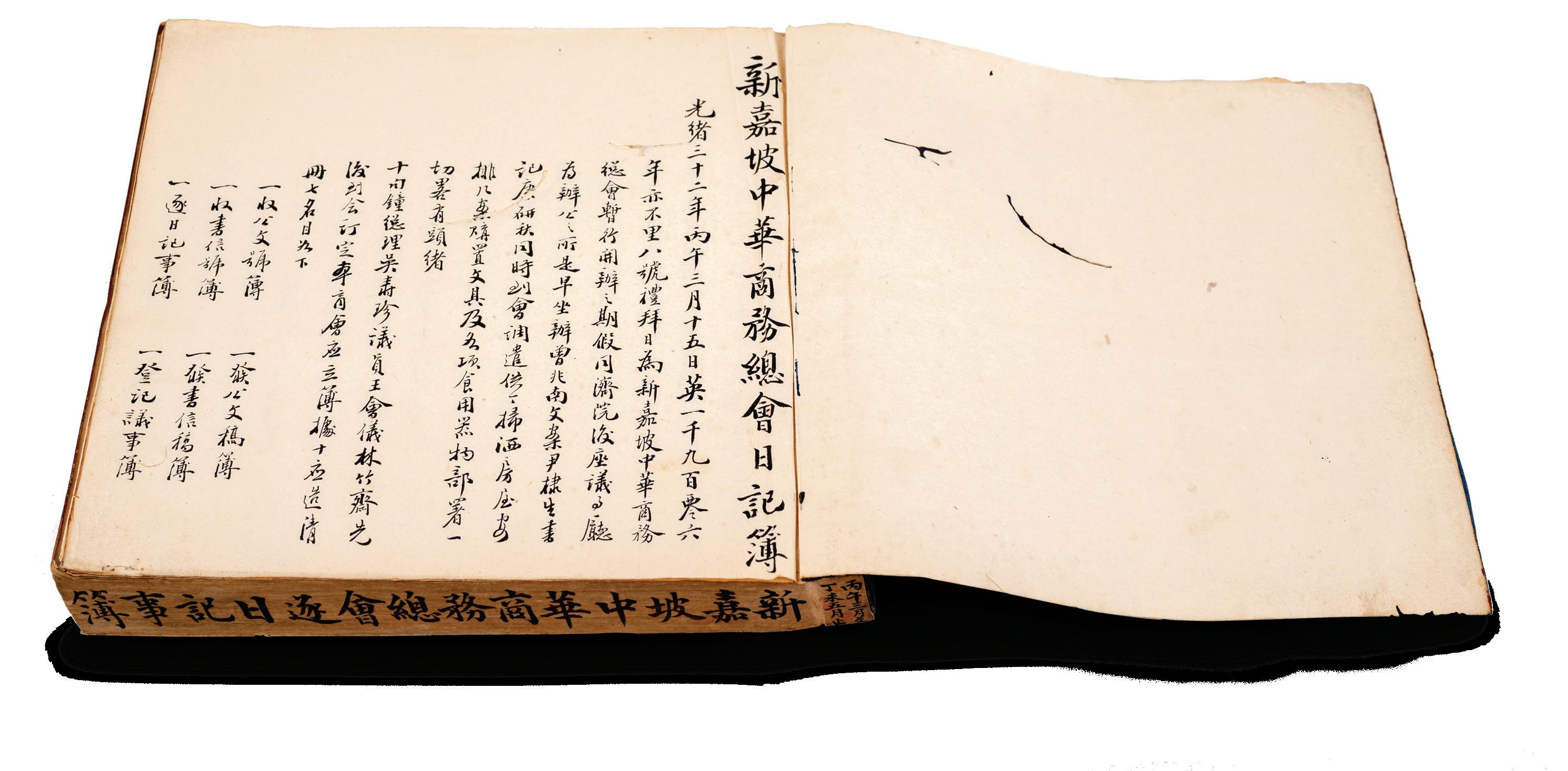
The Ministry of Commerce, following orders, apprising the Ministry of Foreign Affairs on the establishment of the Chamber (1906)
Collection of the First Historical Archives of China



(1908年 )


The Chamber Council Member's badge (1908)

The Council meeting minutes recording on the discussion relating to the Chamber’s badge (1908)
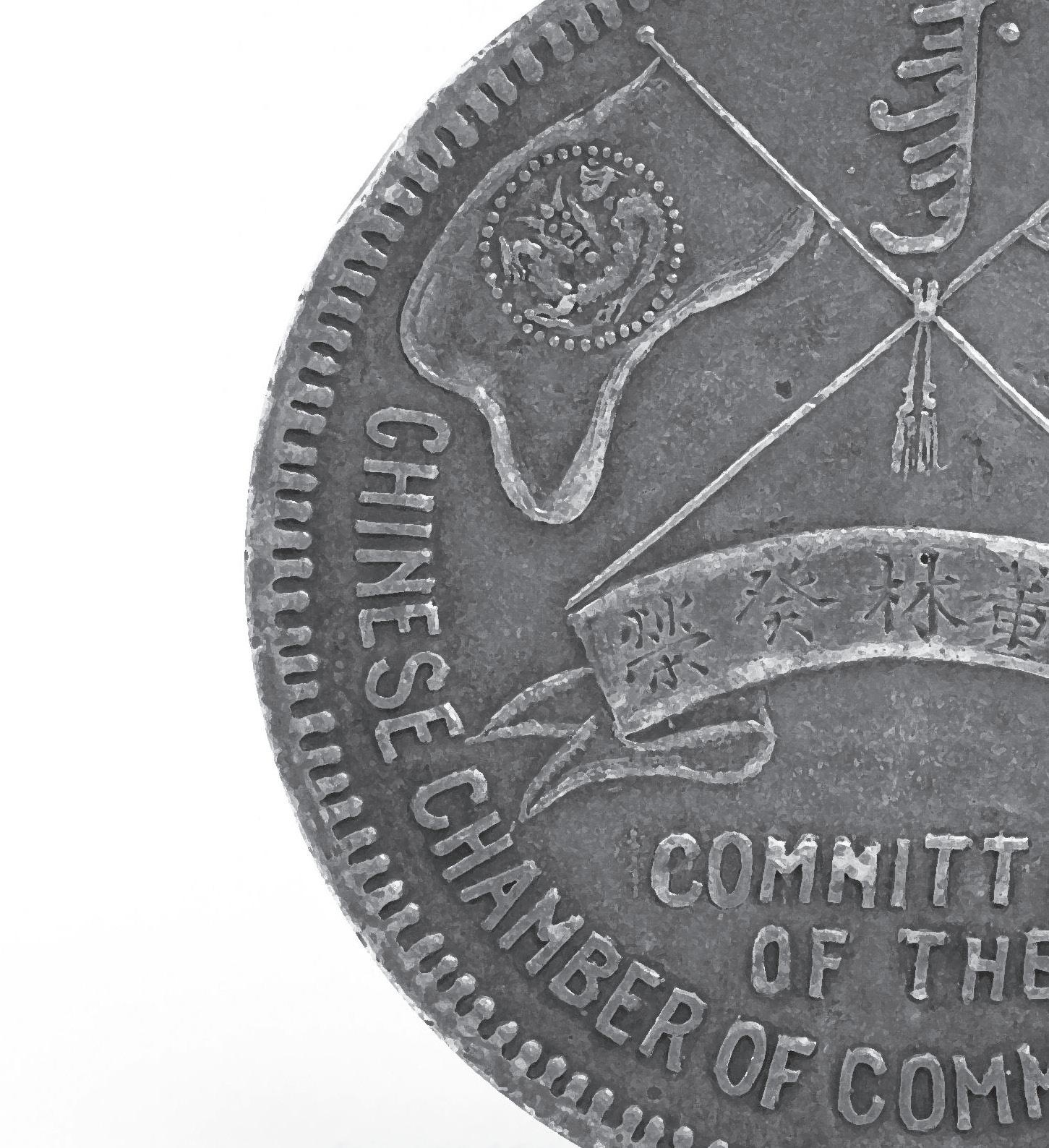
of Singapore, wrote the calligraphy on one side of the fan. On other side of the fan is inscribed with the name of Wee Kim Yam. He was one of the founding Council Members. His father, Wee Ah Hood, built Da Fu Di.
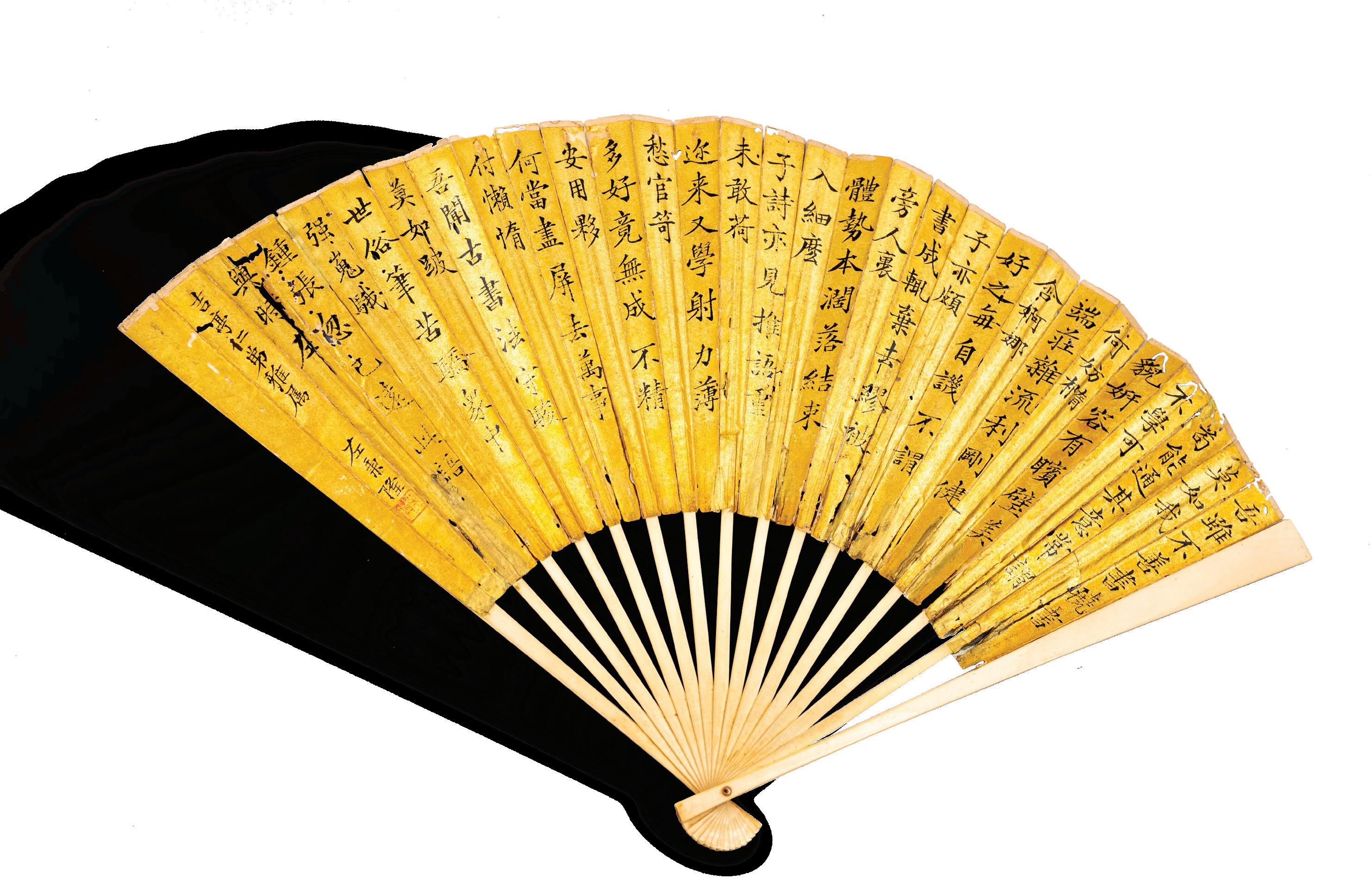
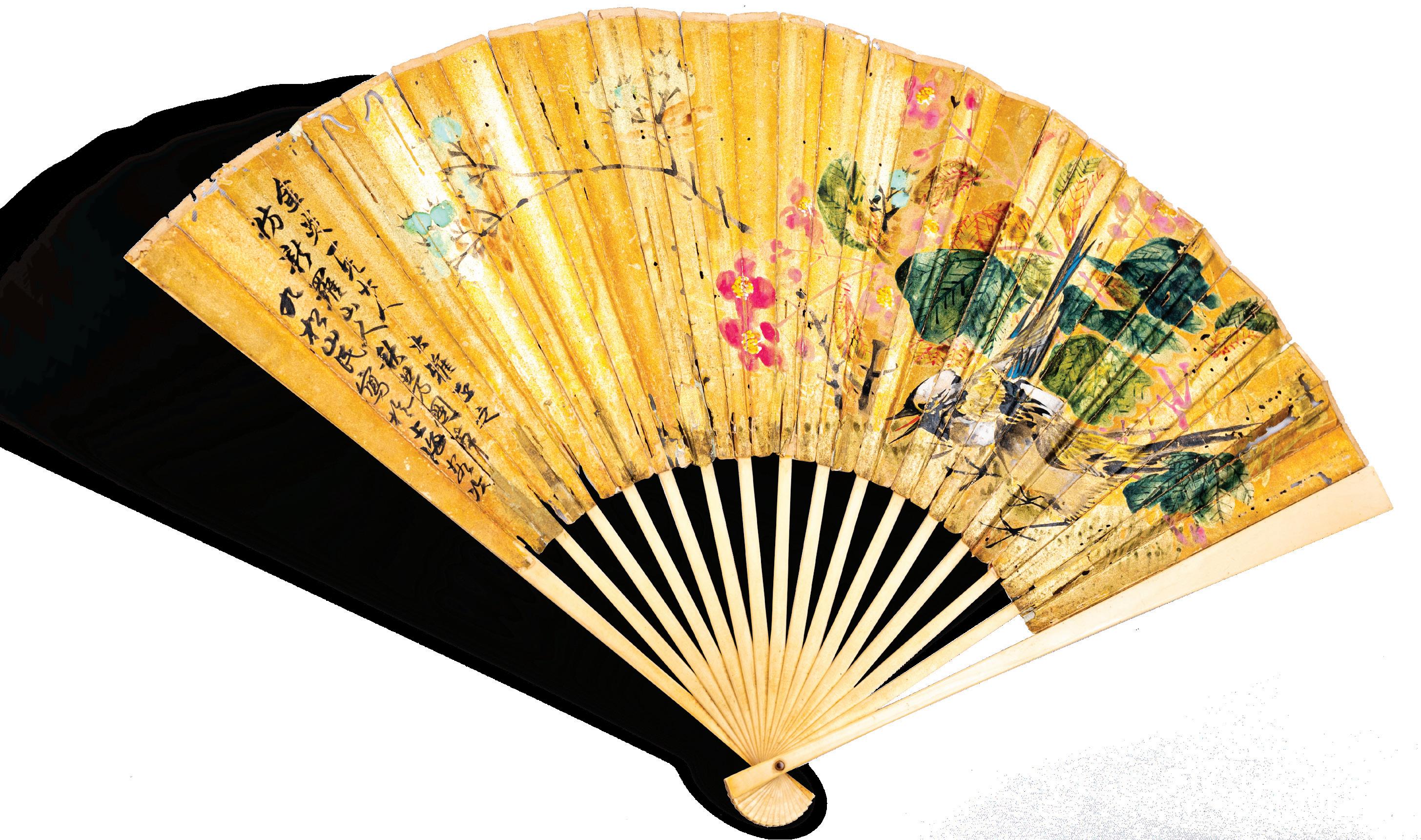
群策匡时 (1914年 )
Unifying for the Future (1914)
Yuan Shikai, the President of the Republic of China, presented the plaque, which reads “Unifying for the Future” (Qun Ce Kuang Shi) to the Chamber.


宗风远鬯
Apex Business Organisation with Predominant Influence (1920)
Xu Shichang, President of the Republic of China, presented the plaque, which reads “Apex Business Organisation with Predominant Influence” (Zong Feng Yuan Chang) to the Chamber.
民国政府徐世昌大总统题给总商会的匾额
The Chamber meeting minutes recording the changes of usage of “Chinese” in the Rules. It changed “sojourner Chinese” to “ethnic Chinese”, “overseas Chinese merchants” to “local Chinese merchants”, showing that the Chamber began to see Singapore as its home before the war (1933).
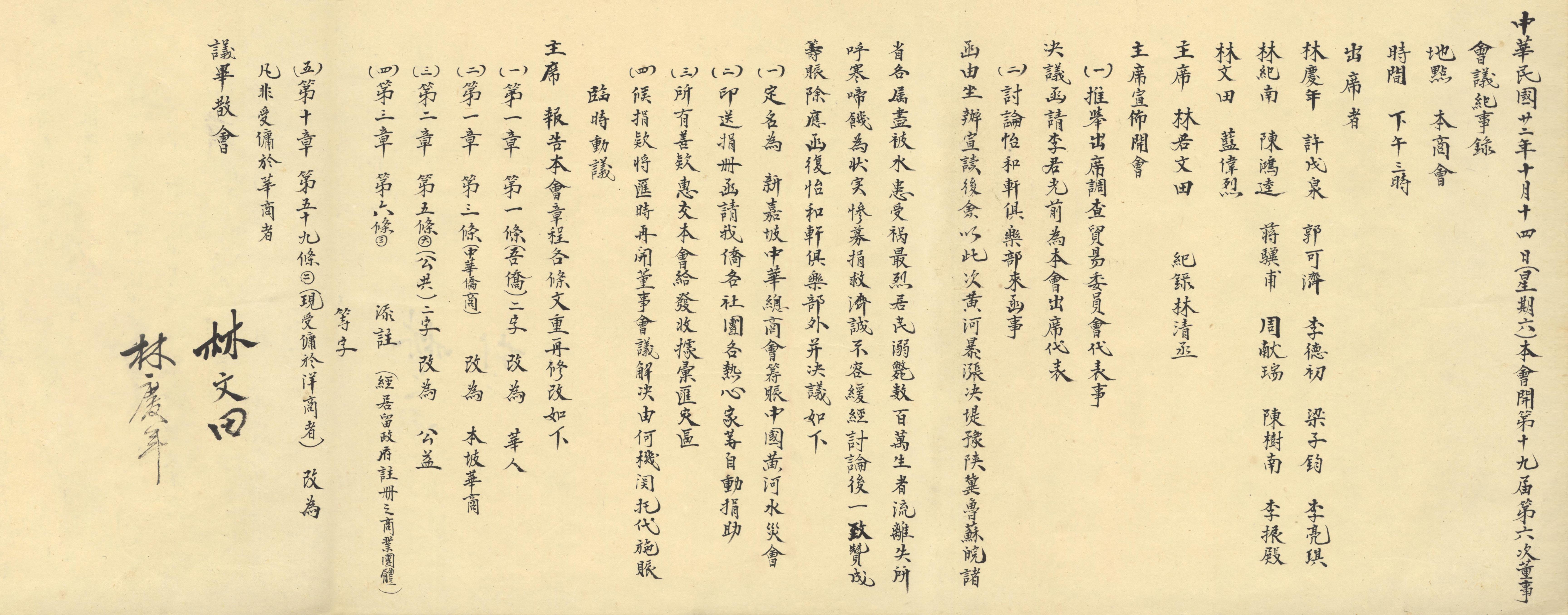
总商会董事会议记录了章程修改 文字,将“吾侨”改为“华人”, “中华侨商”改为“本坡华商”,说明 战前总商会开始落地生根的认同转 向(1933年)
Xu Beihong presented the Chamber with a painting of a rooster (1934)

第一奖 (1951年 )
The first prize of the City Day Ceremony, celebrating Singapore’s attainment of city status (1951).
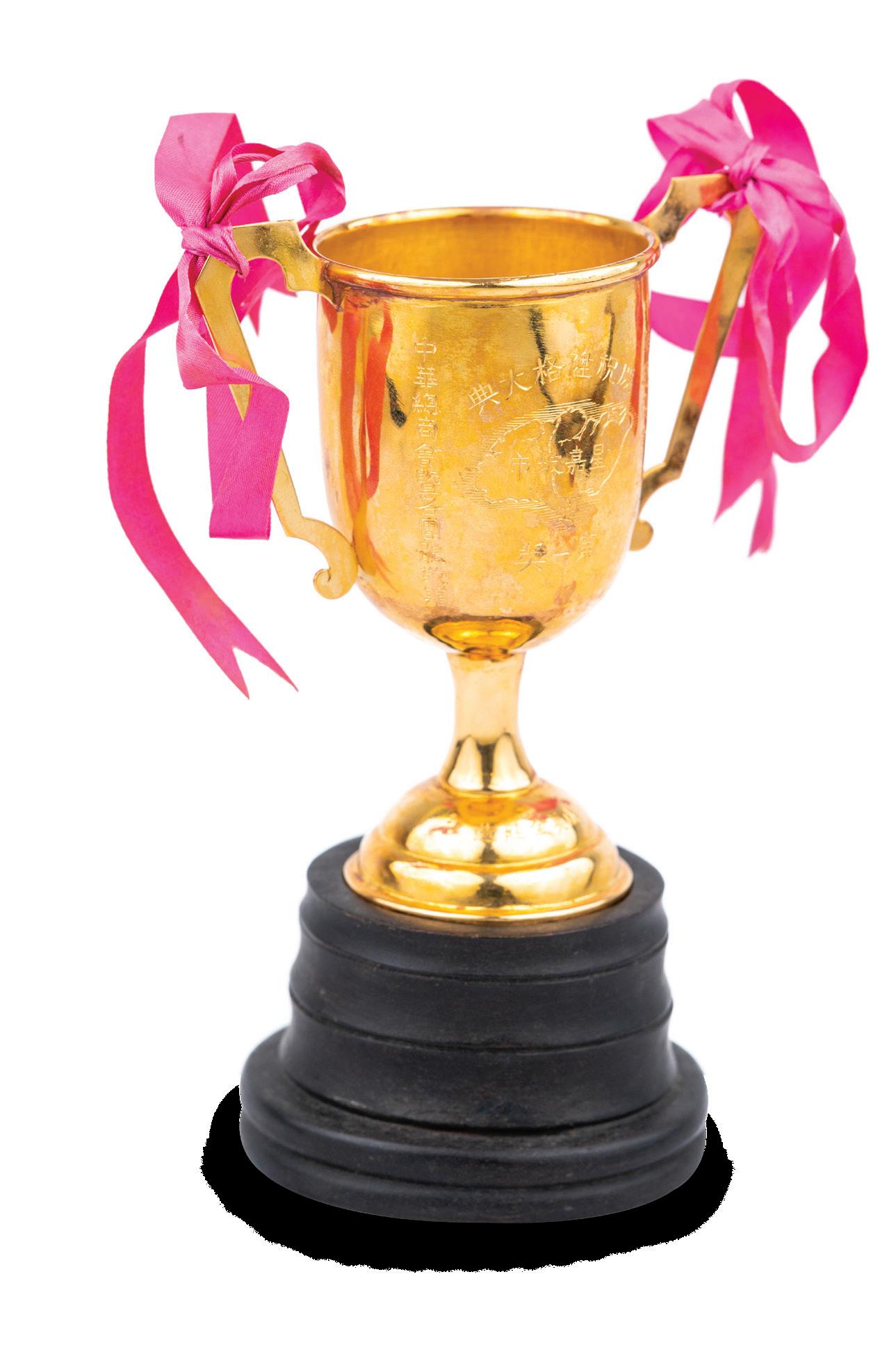
The Chamber participated in the competition during the illuminated procession to celebrate the Coronation of Queen Elizabeth II. The Chamber received the second prize (1953).

The Chamber joined other local Chinese organisations to produce a Queen Elizabeth II commemorative medallion during the celebration of the Coronation of Queen Elizabeth II (1953).

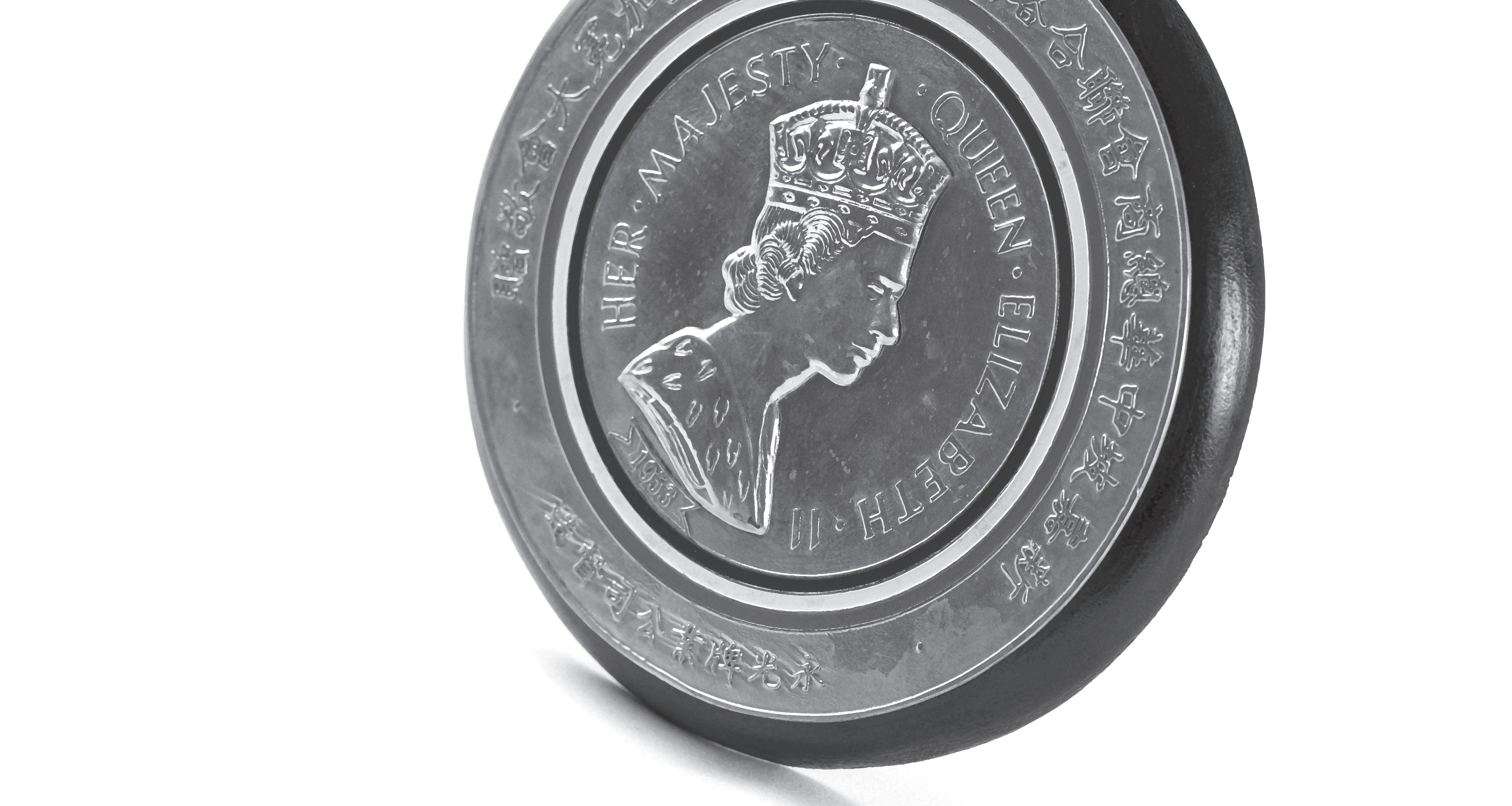
总商会参加庆祝英女王加冕大 会花车巡游庆典比赛,获颁第
南洋大学关防 (1950年代 )

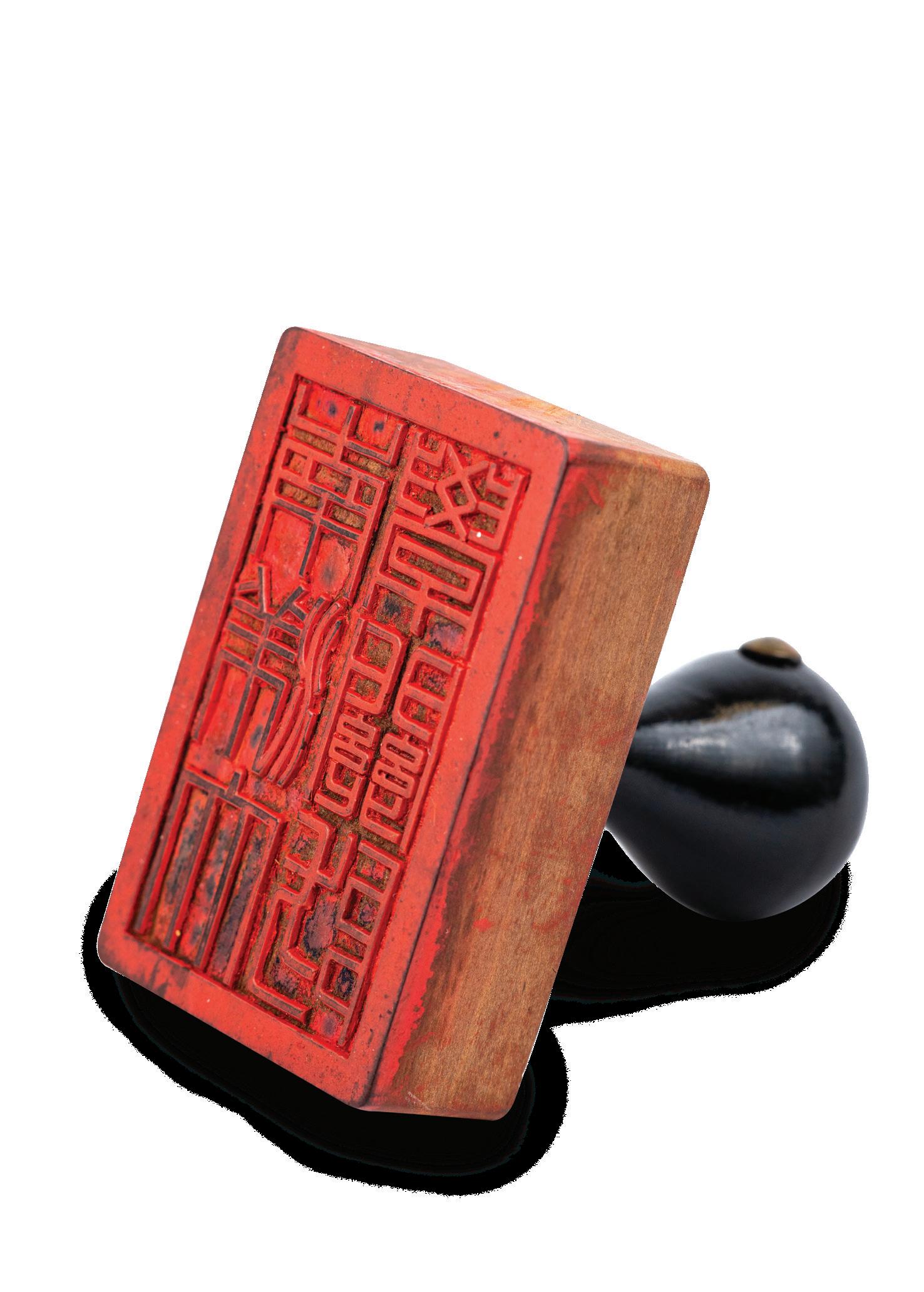
The official seal of Nanyang University (The 1950s)
南洋大学
Nanyang University (The 1950s)


In 1957, the Chamber opened its doors to assist locals in the citizenship registration process.
Certificate of Registration for citizenship of Singapore (1958)
Donated by Yong Siew Hong’s family

Souvenir Of The Singapore Constitution Exposition (1959)

The Chamber ogranised the Singapore Constitution Exposition (1959)

The Proposed Malaya SinoMuslim Cultural Association taking the group photograph at the Chamber (1940)
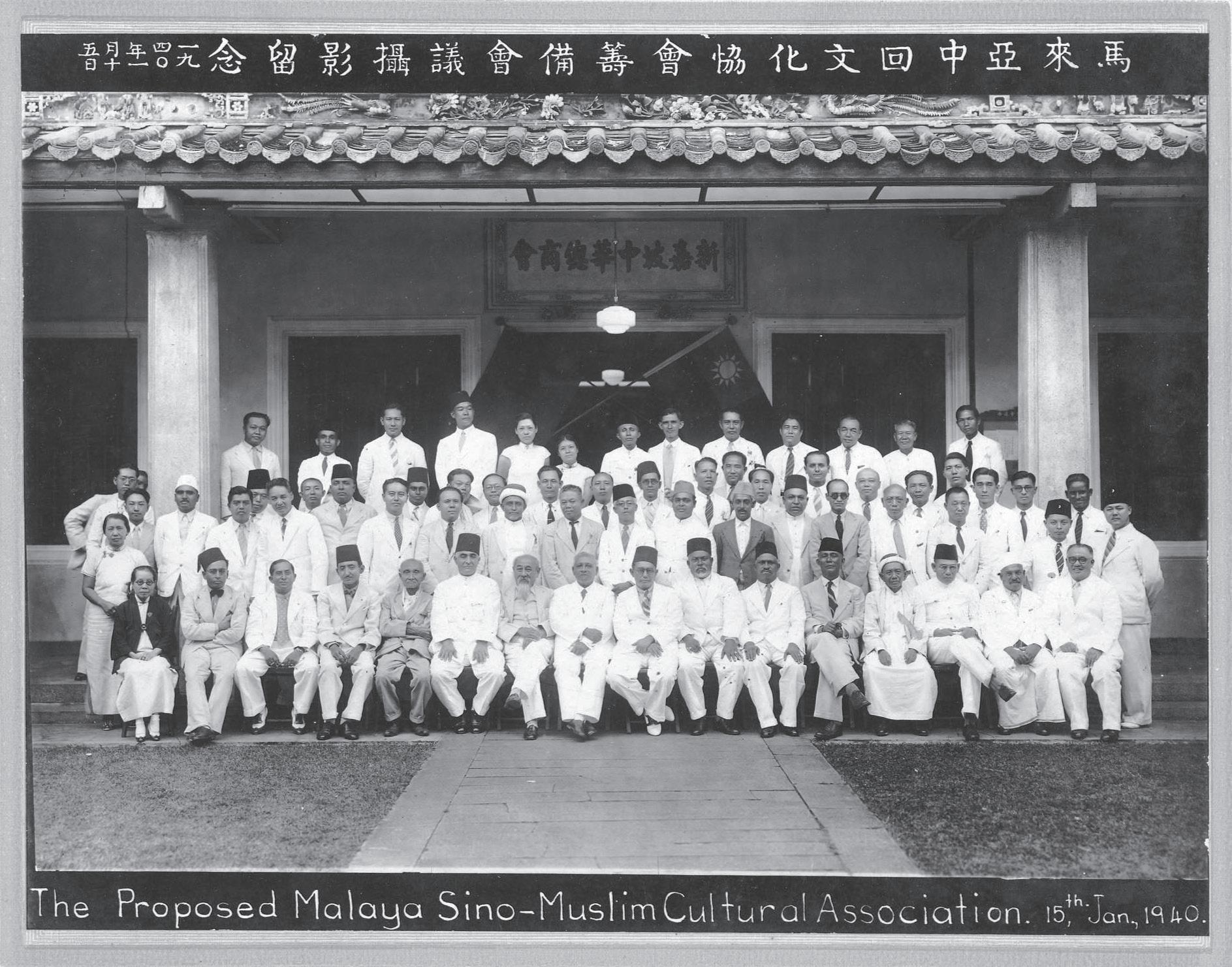

Receipt issued by the Chamber to Wong Ke Heng for renting the auditorium for his wedding banquet (1971)
Donated by Wong Ke Heng's family

总商会纪念币 (1985年 )
Commemorative coin of the Chamber (1985)


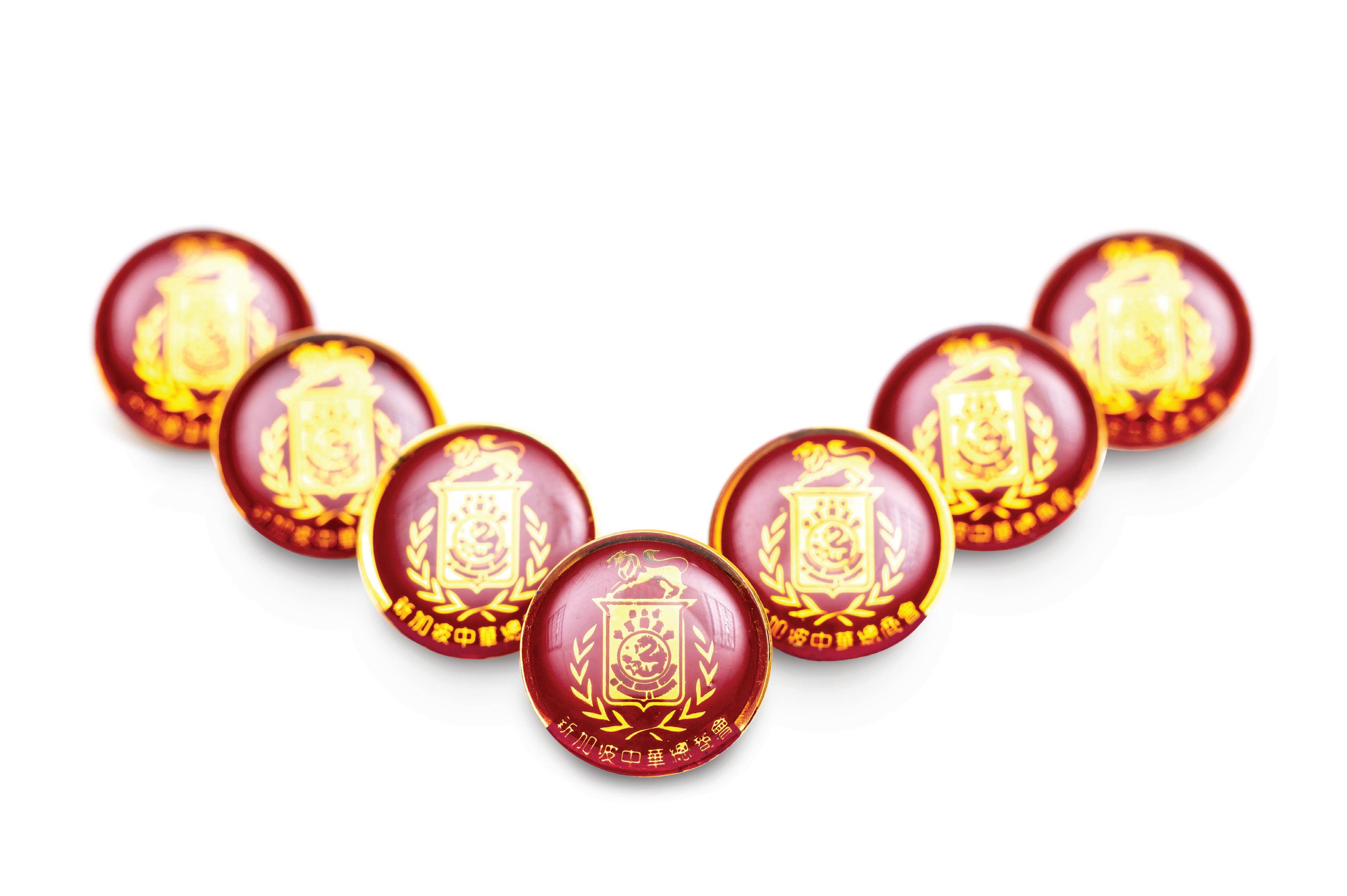
和 “National Service” 字样。

Singapore government introduced the National Service Bill in 1967. The Chamber specially made limited edition medallions to present to enlisted youths. The Medallion features the words of “Jin Zhong Bao Guo (serving the country with utmost loyalty) and “National Service”.


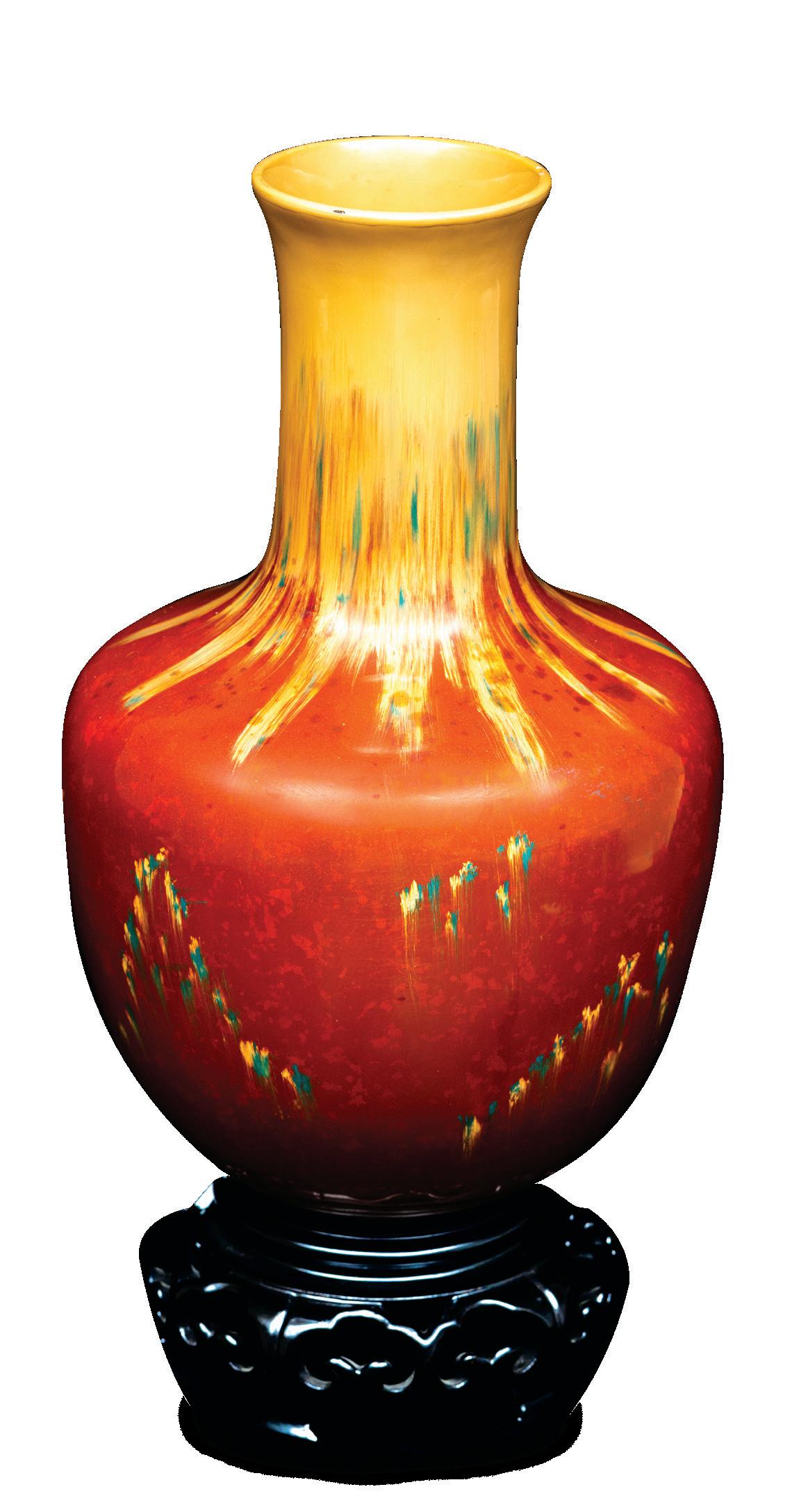
Yao Yilin, then China’s Vice-Premier, visited Singapore and presented the Chamber with a gift (1992).
Xi Jinping, then General Secretary of the Communist Party of China Fuzhou Municipal Committee, Fujian province, visited Singapore and presented the Chamber with a gift (1992).
时任海峡两岸关系协会会长汪道涵到访新加坡
(1993年)。
Wang Daohan, then Chairman of the Association for Relations Across the Taiwan Straits, visited Singapore and presented the Chamber with a purple clay tea set (1993).

(2007年)。
Wen Jiabao, then China's Premier, visited Singapore and presented the Chamber with a gift (2007).

The Sichuan Provincial People's government presented this gift to thank the Chamber for donating to 2008 Wenchuan earthquake (2010).
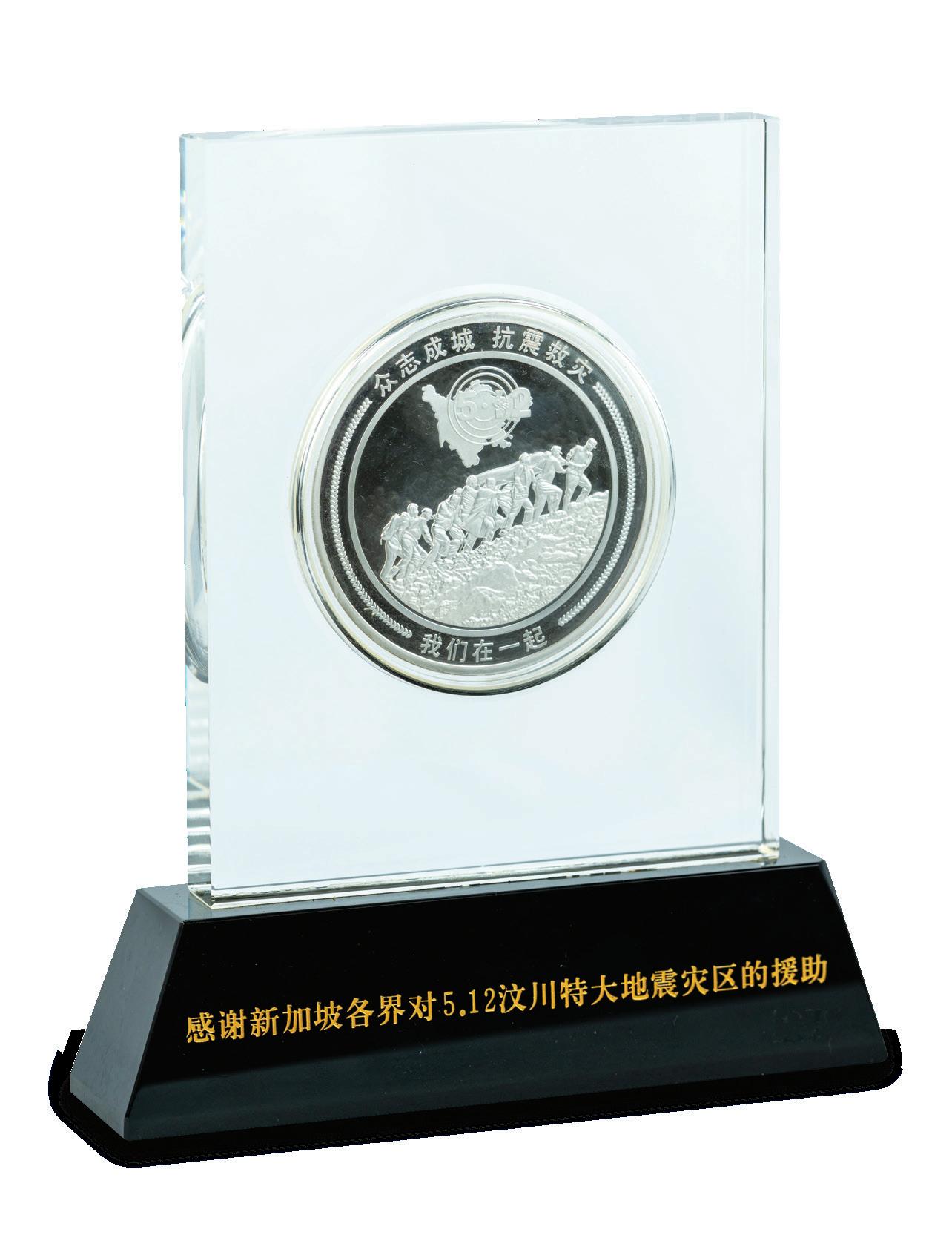
The Chamber received a gift during an economic mission to Indonesia organised by the government (1975).


中国四川省人民政府赠予总商会 的答谢赠礼,感谢新加坡各界对
赠予总商会 (1992年 )。
The Economic Development Board and the Chamber co-organised a business mission to the Philippines. Fidel V. Ramos, then President of Philippines, presented this gift to the Chamber (1992).

(2007年 )。
The Associated Chinese Chambers of Commerce and Industry of Malaysia presented the Chamber with a pewter vase (2007).

新加坡贸易发展局和总商会联合主办 菲律宾贸易考察团。此礼品由时任 菲律宾总统菲德尔•瓦尔德斯•拉莫斯
The World Chinese Entrepreneurs Convention was organised by the Chamber in 1991. The Chinese General Chamber of Commerce (Hong Kong) and the Thai-Chinese Chamber of Commerce and Industry presented a crystal plaque to appreciate the Chamber for hosting the first Secretariat of the World Chinese Entrepreneurs Convention (2005).

Benazir Bhutto, then Prime Minister of Pakistan, presented the Chamber with a gift (1995).
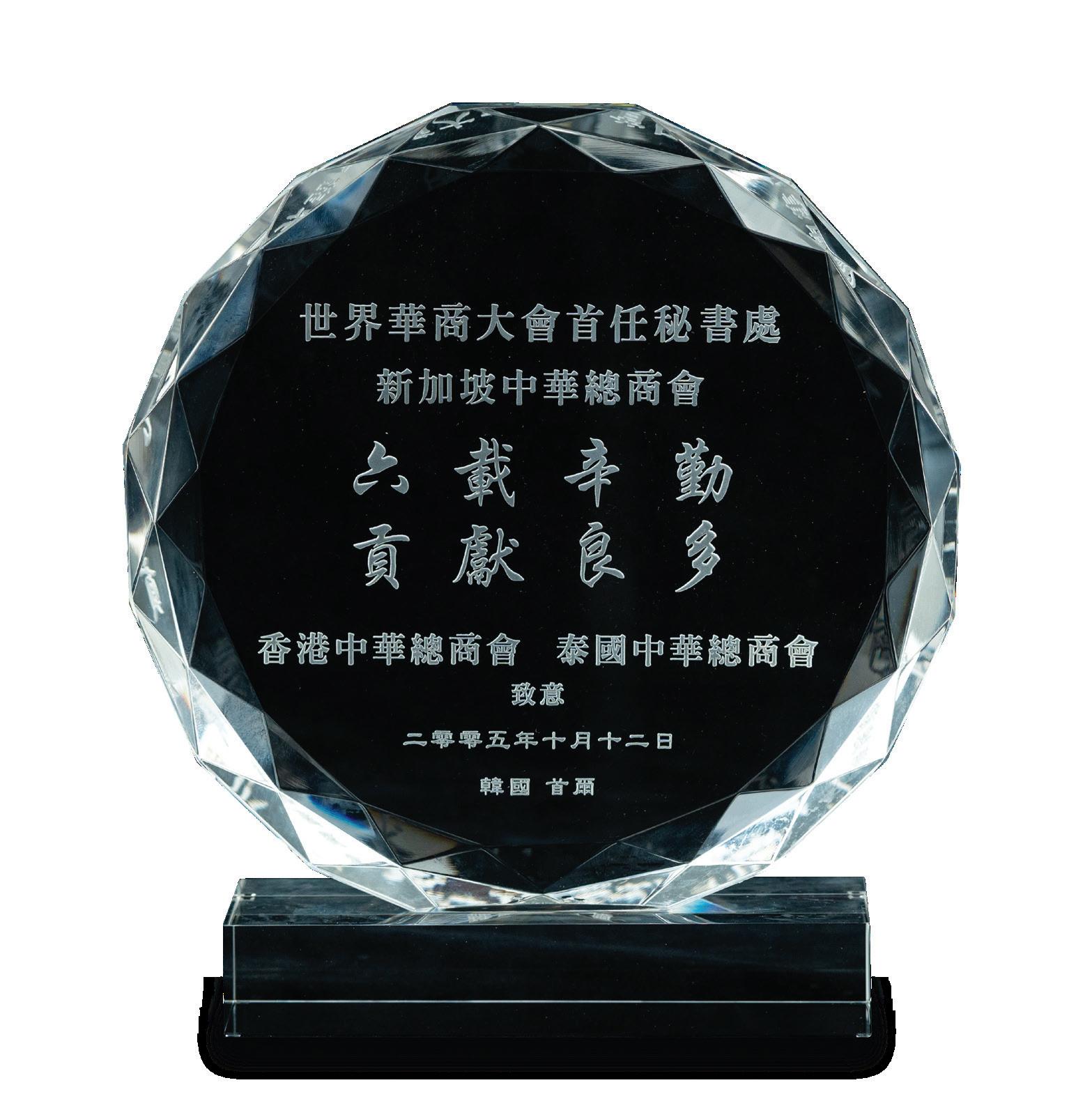
时任巴基斯坦政府贝娜齐尔•布托 总理赠予总商会的礼品 (1995年 )
中华总商会和泰国中华总商会为了答谢本 会担任世界华商大会首任秘书处所付出的 努力,特制盾牌赠予本会(2005年 )
出的努力 (1987年 )。
The Speak Mandarin Council presented the Chamber with the promotion of Chinese award to recognise the Chamber’s efforts in embracing the usage of Chinese language and appreciating of Chinese culture (1987).
The Ministry of Information and the Arts presented the Chamber with a gift to show its appreciation towards the Chamber for supporting the Speak Mandarin Campaign (1993).



推广华语运动委员赠予总商会
“推广华语 精神可嘉” 奖牌, 表彰总商会为推广华文华语所做
新闻及艺术部赠予总商会的 艺术品,感谢总商会对推广 华语运动的支持(1993年 ) 。
总商会纪念会徽 (2006年 )
Logo of the Chamber (2006)
Business China presented the Chamber with the “Business China Enterprise Award” for the Chamber’s contribution (2014).

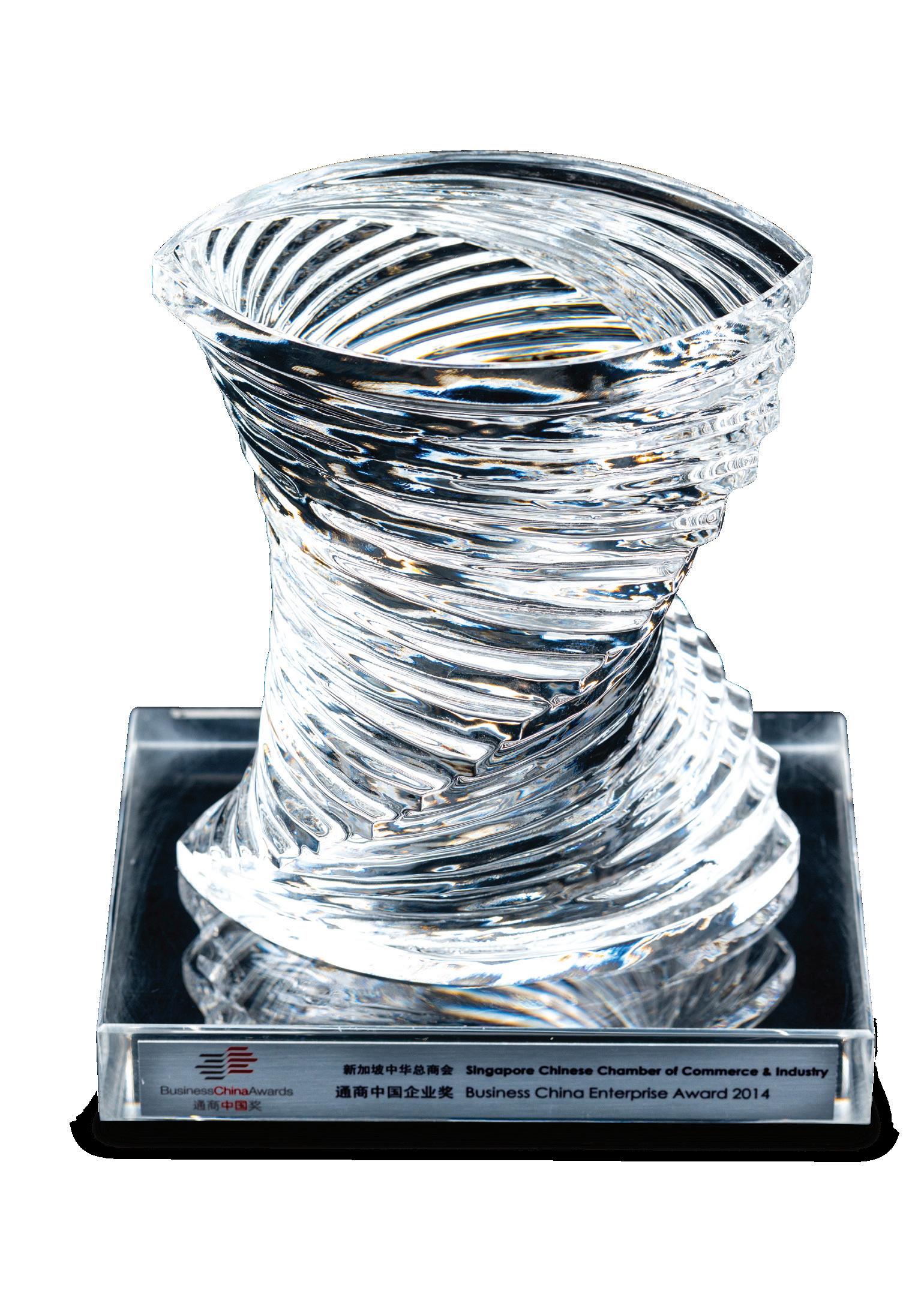
The Chamber presented the “Passing the Legacy of Chinese Entrepreneurial Spirit” award to 50 outstanding Chinese businessmen during the SG50 Outstanding Chinese Business Pioneers Awards Ceremony organised by the Chamber (2015).

Singapore Federation of Chinese Clan Associations presented the Chamber with a souvenir, which reads “Unity in a Time of Difficulty” (He Zhong Gong Ji) (2015).
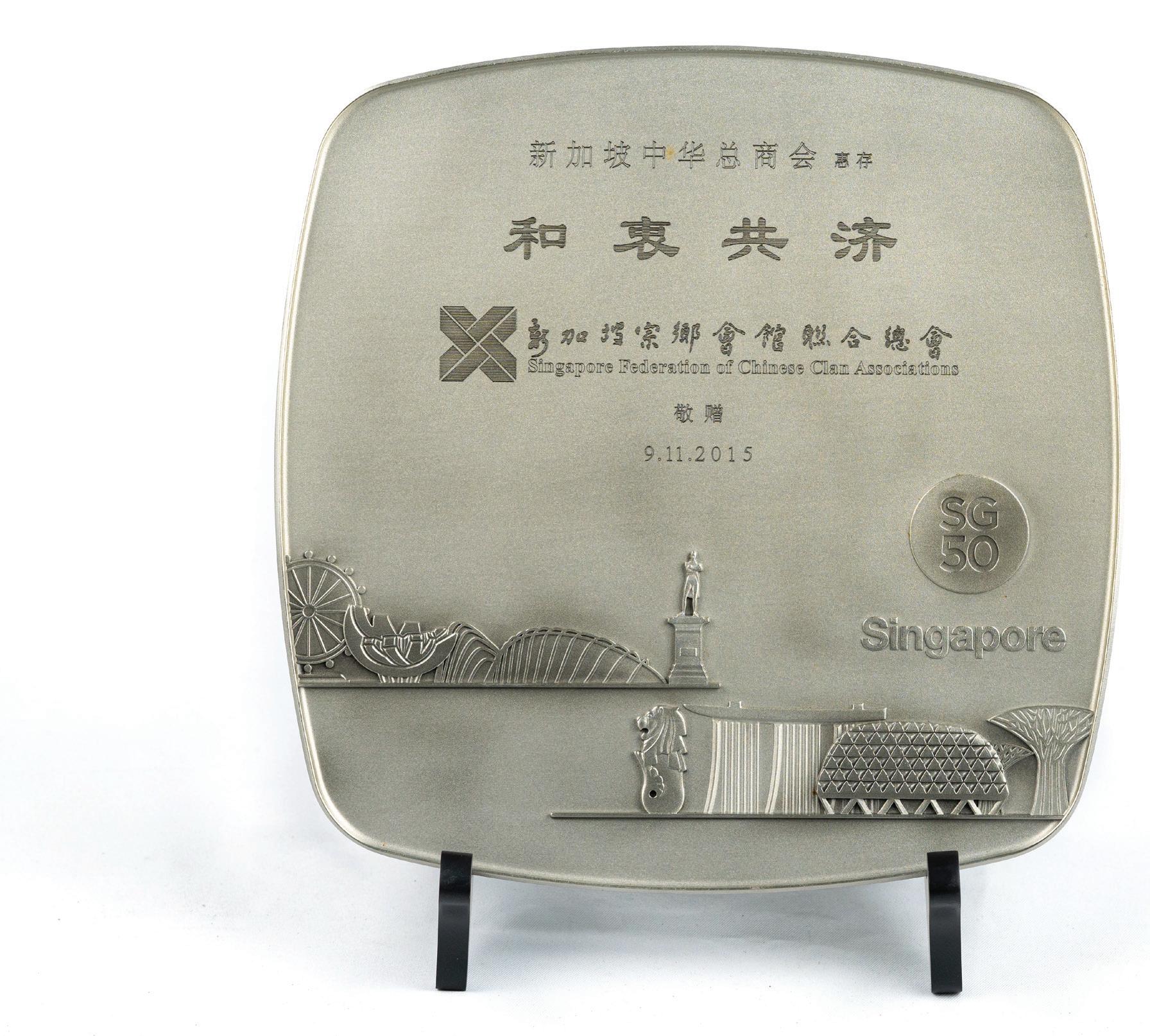
总商会颁发 “传承华商精神” 奖座 给50位荣获总商会设立的“新加 坡建国50周年杰出华商奖” 的本地 华商(2015年)。
新加坡宗乡会馆联合总会赠予总商会 “和衷共济”纪念礼品 (2015年 )
The World Chinese Entrepreneurs Convention Seal (1999)
The World Chinese Entrepreneurs Convention Seal is kept with the Secretariat of World Chinese Entrepreneurs Convention. The term of the Secretariat is six years and rotated between Singapore, Hong Kong and Thailand. The Chamber was the first Secretariat of the World Chinese Entrepreneurs Convention.


世界华商大会印章 (1999年 )
世界华商大会印章由担任大会秘书处保管。秘书处 职务由新加坡、香港、泰国轮值,每任秘书处为期 六年,总商会是首任秘书处。
Tony Tan Keng Yam, then President of Singapore, presented the Chamber with a gift during the President's Challenge, as an appreciation for its donation and its efforts in giving back to society (2016).

时任新加坡总统陈庆炎在总统挑战感谢晚会上赠予总商会的纪念品, 以答谢总商会慷慨解囊,回馈社会(2016年)。

解总商会百多年来厚重的历史和文化底
蕴,同时也能认识本地华商先贤创业维艰﹑创新 求变和努力奋斗的故事。
我们也深信,惟有在前人的基础上,年轻一代才
能从过去的历史经验,省思当今总商会的社会意义,
效法总商会的华商精神,传承总商会华商文化,共创
更美好的未来。
We hope this publication will provide readers with a new understanding of the century-long history and cultural heritage of the Chamber and the narratives of the Chinese pioneer entrepreneurs’ difficulties in establishing new businesses, their relentless hard work and their continuous striving for innovation.
We also strongly believe that it is through understanding the foundation laid down by our predecessors that the younger generation can reflect on the social significance of the Chamber in today’s context, emulate the Chamber Chinese Entrepreneurial Spirit, carry on the legacy of the Chamber Chinese Entrepreneurial Culture and chart a better future.
我 们希望通过这本出版品,读者能重新了
何一本书的出版,都是一段特别的 旅程,《臻品典藏》这本图册也不
臻品典藏》集总商会百年史料、档案和
文物结晶而成。总商会自1906年成立以来,
其秘书处保留了完整的董事会议记录。这批
向各馆馆员致意,感谢他们以专业的学识和
协助与付出。 在此,我们特别感谢新加坡中华总商会
黄山忠会长及全体董事的鼎力支持,让工
作团队顺利推动总商会一系列研究与出版项
目。我们也在总商会华商文化基金董事会的
指导下,从史料汇整、档案研读、文物搜集
珍贵的史料早于2006年百年会庆之后,委托
新加坡国家档案馆协助扫描,完成数码建檔,
使我们得以立足在史料的基础上,着手勾勒本
书的框架。
在档案方面,我们除了向本地国家档案馆
及国家图书馆商调馆藏,也向国外档案馆申
请新加坡总商会相关史料的使用权,以丰富
华商文化馆的展品及影像内容。在此,我们谨
态度提供协助。 总商会在大厦翻新项目期间,知照秘书处
重新汇整内部典藏,欣然发现藏品中有不少珍
贵文物,历史意义匪浅,如清朝驻新加坡总领
事赠的木刻贺联、徐悲鸿画作、国民服役纪念 章等。今藉文化馆成立及图册的出版,让文物
重见天日,对外述说自身的故事与价值意义。
明捐赠者姓名,由衷感谢他们对总商会历史 与文化的奉献。本书未说明出处之展品,皆为 总商会既有典藏。
作为主编,我诚挚地感谢团队和同仁的付
出,是他们的不辞辛劳,让总商会华商文化馆
所策划的第一本展览图册得以付梓。最后,我 们希望读者可以透过这本图册,感受到总商会
对社会、文化与教育的责任感,对先贤走过的 路和历史的重视。值此总商会华商文化馆开幕
此外,我们也透过文物征集和采购扩大典
藏。部份展品由私人捐赠,我们特别在书中注
暨《臻品典藏》图册出版之际,我们诚恳地邀 请您共襄盛举,同时也不吝雅正。
The process of completing any publication is a special journey and Selected Treasures is not an exception. During this journey, it encompasses the expectations, support and contributions of many people. We would like to specially thank the President of the Singapore Chinese Chamber of Commerce & Industry Roland Ng San Tiong as well as Council Members’ support in promoting a series of research and publishing
projects for the Chamber. It took nearly five years for the preparation of this publication from compiling historical materials, studying archival documents, acquiring artefacts to research writing under the guidance of the Chamber Chinese Entrepreneurial Culture Foundation Board Members.
Selected Treasures consists of centuryold historical materials, archival documents and artefacts of the Chamber. Since its
establishment in 1906, the Secretariat of the Chamber has kept a complete set of council meeting minutes. This batch of precious historical materials was entrusted to the National Archives of Singapore for digitalisation after the Chamber’s centennial celebration in 2006. Hence, these historical materials allow us to frame the outline of this publication. We have used the collection from the National Archives of Singapore and National Library
Board as well as sought copyright clearance from overseas archives to use materials related to the Chamber, enriching the content of the SCBCH exhibition and multimedia production.
We would like to express our gratitude to the various organisations in providing professional advice to us.
The Secretariat of the Chamber reviewed and recorded the internal collection during the renovation project of the Chamber building.
Serendipitously, the Chamber uncovered some precious artefacts with historical significance. For example, the wooden couplet given by the Counsel General of Qing Dynasty in Singapore, Xu Beihong’s painting and a National Service Medallion. These artefacts are now displayed in the SCBCH and published in the catalogue, telling the stories and value of these artefacts.
In addition, we have also expanded our collection through donation and acquisition.
Some of the artefacts are donated by private individuals. We specially credit the names of the donors to express our sincere appreciation for their contributions in perpetuating history and culture. Those artefacts without reference in the publication belong to the Chamber’s collection.
As the chief editor, I would like to express my heartfelt gratitude to the team for their conscientious efforts in preparing the first exhibition catalogue of the SCBCH. Lastly, through the publication, we hope that readers have a sense of how the Chamber upheld its responsibility for society, culture and education. We also hope that readers can appreciate the historical milestones that our
pioneers have been through over the century. We would like to sincerely invite you to visit the SCBCH after its opening and launch of this publication.

SCCCI Chinese Entrepreneurial Culture Foundation would like to express our appreciation to the following organisations and individuals for their support in the production of this publication:

National Heritage Board
Culture Matching Fund
National Archives of Singapore
National Library Board Singapore
National Museum of Singapore
Singapore Press Holdings Media Limited
National University of Singapore
Singapore Federation of Chinese Clan Associations
First Historical Archives of China
Institute of Modern History Archives, Academia Sinica (Taipei)
National Archives of Thailand
The National Archives (United Kingdom)
Biblioteca Estense Universitaria (Italy)
Nationaal Archief (Netherlands)
Leiden University (Netherlands)
Dr Wang Gung Wu
Wan Shung Ming
Kee Meng Cheng
Loo Say Chong
Voo Choon Ling
Tan Lai Huat
Dr Tan Chee Lay
Dr Lee Peng Shu
Toh Lam Huat
Dr Yeo Kang Shua
Family of Yong Siew Hong
Mr and Mrs Lee Kip Lee
Dr Ho Puay Peng
Dr Zhou Zhao Cheng
Chui Choon Sin
Teo Peng Hoe
Fiona Hu Ai Lan
Dr Hwang Yee Cheau
Family of Wong Ke Heng
The order of the names is based on the number of strokes of the Chinese characters.
And to everyone who supported this publication
Inaugural SCCCI Chinese Entrepreneurial Culture Foundation Board (2019-2022)
主席 Chairman
黄山忠 Roland Ng San Tiong
委员 Members
蔡其生 Thomas Chua Kee Seng
吴学光
Wu Hsioh Kwang
白南泉
Adrian Peh Nam Chuan
刘泰山
Lau Tai San
白连源
Pek Lian Guan
吴绍均
Ng Siew Quan
高泉庆
Kho Choon Keng
Building Renovation Advisory Panel
顾问 Advisor
黄山忠
Roland Ng San Tiong
John Lim Hwee Chiang 主席 Chairman
委员 Members
林惠璋
高泉庆
Kho Choon Keng
Lee Sze Leong
何培斌博士
Dr Ho Puay Peng 张东孝
Daniel Teo Tong How 杨茳善博士
Dr Yeo Kang Shua
臻品典藏
Selected Treasures from the Collection of the
出版统筹 Publication Coordinator 吕正扬 Lu Cheng Yang 陈星伊 Chin Sin Yee
主编 Chief Editor 陈丁辉博士 Dr Tan Teng Phee
助理编辑 Assistant Editor 蔡佩雯 Chua Pei Wen 庄蕙瑛 Serene Chng Hui Ying
出版 Publisher 新加坡中华总商会华商文化基金
SCCCI Chinese Entrepreneurial Culture Foundation 47 Hill Street, SCCCI Building, Singapore 179635
国际书号 ISBN 978-981-18-3608-4
出版年份 Year of Publication 2022年 2月 February 2022
The views expressed here are solely those of the authors in their private capacity and do not in any way represent the views of the National Heritage Board and/or any government agencies.
All Rights Reserved. No part of this publication may be reproduced, stored in a retrieval system, or transmitted in any form by any means, electronic, mechanical, photocopying, recording or otherwise, without the prior permission of Singapore Chinese Chamber of Commerce & Industry.
© 新加坡中华总商会 2022年
© 2022 Singapore Chinese Chamber of Commerce & Industry
